RISE 2022 Summer Presenters
-
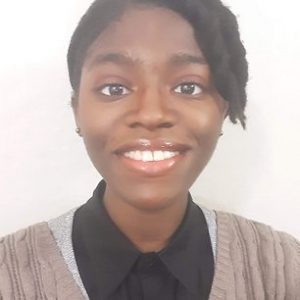
Room 116, Poster #1
New Jersey City University
Mentors:
Opetunde Joy Akeju, New Jersey City University, Rutgers RISE-INSPIREDr. Alexander Cope, Department of Genetics, Human Genetics Institute of New Jersey Rutgers University, Piscataway NJ, USA
Codon usage bias (CUB) is a phenomenon that occurs during mRNA translation in which certain codons are used more often than others. CUB has been observed across all domains of life and is the result of a combination of adaptive (e.g. natural selection for fast translation) and non-adaptive (e.g. mutational biases) evolutionary forces. A recent study (Rosenberg et al. Nature Communications 2022) found a correlation between codon usage and the distribution of dihedral bond angles of the secondary structure of the respective protein, suggesting a potential mechanism by which codon usage can impact protein folding. However, this analysis failed to control for variability in gene expression, which is known to strongly correlate with CUB. To assess the impact of gene expression on their analysis, we simulated codon usage in the E. coli K12 MG1655 genome based on a population genetics model of coding sequence evolution. When applying the pipeline of Rosenberg et al. to the simulated data, we find they are strongly concordant with the results observed in the real coding sequences, despite the fact that the simulated data only consisted of a subset of the sequences analyzed in the real data. The statistical analysis of p-values of the genome simulated by ROC-SEMPPR and the real data showed an overall correlation coefficient 0.79, which supports our hypothesis that dihedral bond angles are not the direct causes of CUB in the E. coli genome. Gene expression has a high impact on the genome sequence presented by Rosenberg et al., and so their results are likely a statistical artifact of failing to control for gene expression.
Biography: Opetunde Joy Akeju is a rising junior undergraduate student who is currently pursuing a B.S. degree in Biology at New Jersey City University in Jersey City, NJ. Her current research at Rutgers University Department of Genetics involves utilizing bioinformatics tools to extract and analyze meaningful data from mRNA sequences. Her future research interests and are in the pharmaceutical sciences, as well as clinical and environmental toxicology.
-
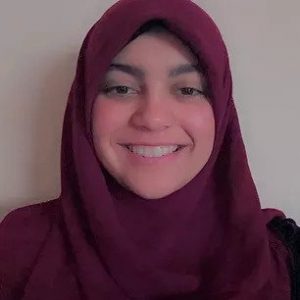
Room 116, Poster #2
The College of New Jersey (TCNJ)
Mentors:
Rebecca Risman
Department of Biomedical Engineering
Rutgers, The State University of New JerseyDr. Valerie Tutwiler, Ph.D.
Department of Biomedical Engineering
Rutgers, The State University of New JerseyThe effect of PAI-1 on clot structure and fibrinolysis
Excessive blood clotting can lead to heart attacks and strokes because they can restrict blood flow to downstream organs. Fibrinolysis is an essential process that breaks down the fibrin network that holds blood clots together. Tissue plasminogen activator (tPA) triggers the enzymatic process of fibrinolysis. Cancer patients, obese people, and pregnant women all have an increased risk for excessive clotting. Notably, these conditions are also linked to elevated plasminogen activator inhibitor type-1 (PAI-1) , which down-regulates fibrinolysis as it inhibits tPA function. Here, we study the effect of PAI-1 on the structure and enzymatic degradation of plasma clots. We hypothesize that higher levels of PAI-1 have a combined enzymatic and structural influence on fibrinolysis, where a denser structure limits fibrinolysis.
To probe this question, using pooled human donor plasma, we collected turbidimetry measurements to assess changes in initiation clotting, rate of clot formation, maximum optical density (OD), and rate of lysis. Clotting was initiated with thrombin in the presence and absence of patho-physiological concentrations of tPA and PAI-1 Our preliminary turbidimetry findings show that with higher PAI-1 concentrations, there is a significant decrease in lag time, rate of formation and rate of lysis (p<0.0001) and a significant increase in the maximum OD(p<0.0001).
Moreover, we took scanning electron microscopy (SEM) and confocal microscopy images of the plasma clots to assess changes in fibrin structure. Our analysis shows a surprising significant decrease in branching (p<0.05) and no significant difference in number of fibers with increasing levels of PAI-1.
Collectively, these results suggest that increasing concentrations of PAI-1 is correlated with a higher clot density, and an increase in lysis inhibition. To our knowledge, this is the first study exploring the network changes with PAI-1. Consequently, understanding the role of PAI-1 on fibrinolysis will aid in future research of more effective thrombolytic treatments.
Biography: Hajer Ali is from Columbus, New Jersey and is currently enrolled as an undergraduate at The College of New Jersey (TCNJ). She is a rising junior and is pursuing a degree in biomedical engineering. She is currently a member of the New Jersey Society of Professional Engineers (NJSPE) and will participate in the research track at her institution for her junior and senior year. With the guidance of her advisor, Dr. Tutwiler and her mentor, Rebecca Risman, this summer Hajer worked on studying the effect of plasminogen activator inhibitor 1 on clot structure and enzymatic degradation. She aims to pursue a PhD in Biomedical Engineering after graduating from TCNJ.
-

Room 116, Poster #3
Binghamton University
Mentors:
Yingcheng Zhang, Ashutosh Goel (PI)Impact of mixed alkali effect on the crystallization behavior of model high-level waste glasses
The Hanford site at Washington state currently houses roughly 56 million gallons of radioactive waste stored underground. It has been proposed to utilize borosilicate glasses to vitrify high-level nuclear wastes due to their high chemical durability and low cost. During the vitrification process, the internal melt becomes susceptible to nepheline crystallization because of the uneven cooling gradient inside of the steel canister. The nepheline crystallization phase has been known to significantly decrease long term chemical durability of the final vitrified product. This work focuses on the impact of Mixed Alkaline Effect (MAE) on the crystallization behavior of the waste glasses in order to investigate nepheline crystallization. To see MAE, six series of glasses containing Na-Li and Na-K ratios are being melted. XRD is run on glass samples to confirm its amorphous nature. We then begin to remelt and cool the glass following the Canister Centerline Cooling (CCC) heat-treatment temperature profile conducted at the Hanford site. Rietveld analysis identifies percent composition of amorphous and crystalline weight in the samples. The aim to better understand crystallization patterns has been conducted. We have now seen nepheline formation in seven compositions of mixed-alkali effect glass following CCC. The Rietveld analysis of the glass-ceramics identify that they do not follow the current Optical basicity model that has been previously used to predict nepheline precipitation. Further work is being done to understand the structural origin of nepheline in these glass series. Ultimately, these studies highlight the importance baseline crystallization studies have on nuclear waste vitrification applications. If we can provide insight into nepheline formation, complex nuclear waste compositions with higher waste loadings and minimized nepheline crystallization can be better designed.
Biography: Flynn Anderson is a graduated Biomedical Engineer from Binghamton University with his focuses being in tissue engineering, biosynthetic textile manufacturing, community-based equity work, and low-cost biotechnology. His previous research includes organ microfluidics at Binghamton University, 3D bioprinting at Harvard Medical School, braided electrode leads for Parkinson patients through the AEMB minds scholar program, and global drug allocation through the Global Health Impact organization, as well as working in drug qualification at Regeneron Pharmaceuticals. Additionally, Flynn is part of TRIO and works both as a mentor for low-income, first-generation engineering students, and as a graduate mentor for the Upward Bound Math and Science program. Flynn has spoken at BMES conferences and NIH symposiums. He has most recently been awarded New York State’s Chancellor’s Award for the SUNY system, as well the Association for Equity and Excellence in Education’s student of recognition award. Flynn runs his own clothing brand focused on reducing fashion waste and is actively pushing for success. Following the program, Flynn will be applying to graduate school, fellowships like NSF GRFP, Rhodes and, Fulbright, as well as taking time to decide what life has next for him.
-

Room 116, Poster #4
The College Of New Jersey
Mentors:
Sagar Khare, Ph.D., Nityananda Pal, Ph.D Candidate
Department of Chemistry & Chemical Biology
Rutgers UniversityProtein modification is an invaluable technology for the in-depth study of biochemical mechanisms and development of novel technologies. A protein’s lack of thermal stability causes it to lose more than 50% of its activity when exposed to temperatures greater than 50℃. Creating thermal stabilized and well-defined protein structures such as the DhaA31 haloalkane dehalogenase that converts the environmental hazard trichloropropane (TCP) to a greener chemical constitutes an ongoing great challenge. Towards this goal, genetic engineering has been used to introduce specific residues at precise locations in the protein sequence. These mutations are expected to improve the protein’s thermal stability while maintaining its catalytic activity with TCP under extreme conditions. To test the activity of the mutated enzymes a colorimetric dehalogenase assay was performed and a multi-enzyme assay was conducted in order to convert toxic TCP to harmless glycerol. Results suggest that the mutations did not affect the enzyme’s activity and the efficiency of the TCP conversion to the final product glycerol was greater than 50% during the operational period. The thermal stability of the protein has yet to be tested but if the enzyme is capable of withstanding high temperatures there are better chances of treating TCP with the engineered proteins at the waste streams of companies that use this contaminant in large quantities. In order to conduct this research support was provided by Dr. Sagar Khare, his collaborators and a grant from the National Science Foundation NSF-EEC-1950509, REU Site in Cellular Bioengineering: From Biomaterials to Stem Cells.
Biography: Sachely Antuna is a rising junior at the College of New Jersey pursuing a major in Biomedical Engineering. During her time at TCNJ, Sachely has been on the Dean’s list each semester and is a member of the Biomedical Engineering Society and Society of Women Engineers. She is also part of the Honors and Scholars Program at TCNJ and member of the Honors Advisory Board. After graduation, she plans to attend graduate school and pursue her Ph.D. in Biomedical Engineering. Sachely would like to thank RISE and the REU in Cellular Bioengineering for supporting and providing her with all resources needed to complete her research.
-
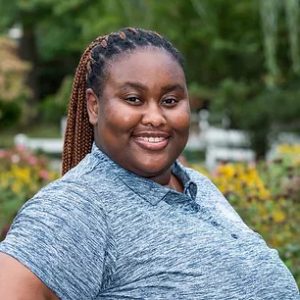
Room 116, Poster #5
Kean University
Mentors:
Angela Appiah-Kubi, Yadiel Varela-Soler, Charles Roth Ph.D
Department of Biomedical Engineering
Rutgers, The State University of New JerseyCystic Fibrosis (CF) is an autosomal recessive genetic disease characterized by chronic lung inflammation and recurrent lung infection commonly caused by the anaerobic bacteria 𝘗𝘴𝘦𝘶𝘥𝘰𝘮𝘰𝘯𝘢𝘴 𝘢𝘦𝘳𝘶𝘨𝘪𝘯𝘰𝘴𝘢. The bacteria 𝘗.𝘢𝘦𝘳𝘶𝘨𝘪𝘯𝘰𝘴𝘢 utilizes the mucus layer of the lungs to grow and multiply, forming a thick biofilm layer around them, composed of bacteria, protein, extracellular DNA, and polysaccharide matrix. The biofilm production of P.aeruginosa is one of the factors that has led to the increase of drug resistance in CF patients, which is now the primary cause of morbidity and mortality among patients. This study employed variations of minimum biofilm eradication concentration (MBEC) assays, negatively charged graft copolymers, and the pre-existing antimicrobials tobramycin and polymyxin B to study the interaction of the biofilms with the polymers. Similar to standard MBEC assays, during our “pre-treatment” MBECs, the bacteria were allowed to form biofilms for 48hr, after which they were exposed to different graft copolymers and incubated for different exposure times before the addition of the antimicrobials. Tobramycin (TB) and Polymyxin B (PB) exhibited a change in MBECswhen the biofilms were exposed to the polymers at different rates. Preliminary data indicated an improvement in biofilm eradication with polymyxin B over tobramycin. A difference in efficacy was also observed in the different strains of bacteria. This suggests that the interaction of the polymers complements the mechanism of action of PB over TB. Further understanding of the interactions that occur between the biofilm, drug, and graft copolymer could allow us to develop more efficient polyelectrolyte surfactants that could possibly enhance its efficacy in biofilm eradication of 𝘗.𝘢𝘦𝘳𝘶𝘨𝘪𝘯𝘰𝘴𝘢 and to improve biofilm-related drug resistance. Support was provided by a grant from the National Science Foundation NSF-EEC-1950509, REU Site in Cellular Bioengineering: From Biomaterials to Stem Cells.
Biography: Angela Appiah-Kubi is a rising senior at Kean University within the New Jersey Center for Science, Technology, and Mathematics program. She is a Biotechnology/Molecular Biology major and will be starting a new position as a lab assistant for the STEM program. Her time at Kean University has provided her the opportunity to perform groundbreaking glioblastoma research. Angela is a member of various clubs and honors societies including Biotech Club, Tri-Beta Honors Society, STEM outreach program, and Women in STEM Club. She has been on Dean’s list every semester since her freshman year and has received the Lamda Alpha Sigma Honors award for her academic excellence. While STEM and work have provided her with various skills, she makes sure to have hobbies such as art and volunteering. Her goal in life is to receive a Ph.D. in cancer biology and aid in the development of new and effective treatments for glioblastomas.
-

Room 116, Poster #6
Farmingdale State College
Mentors:
Emely Arizaga-Molina
Jessica Hamilton Ph.D
Department of Psychology and Clinical Psychology Ph.D Program
Rutgers, The State University of New JerseySleep and Suicide Risk in Latina Adolescents
Suicide is a major public health issue. Suicide is the second leading cause of death in adolescents in the United States. With suicide rates increasing, many organizations declare a state of emergency concerning children’s and adolescents’ mental health. Latina adolescents in the United States have disproportionately higher rates of depression, anxiety, and suicide attempts than their male and white peers. Although extensive research has been conducted on risk and protective factors against suicidality, research on Latina adolescents is understudied. Sleep is a factor that plays a role in suicidality, specifically sleep disturbance. Latinas are vulnerable to poor sleep due to structural inequalities. This study will help bridge the gap in Latina research to identify whether there is a relationship between sleep disturbance and suicide in Latina adolescents.
Biography: Emely Arizaga-Molina is a rising junior at Farmingdale State College in New York. She is pursuing a major in Applied Psychology and minoring in Sociology. Along with her studies, she is the Vice President of the Psychology Club, Secretary of the Student Government Association, and the President of the Psi Chi Honor Society at Farmingdale State College. She also serves on multiple committees such as the Student Multicultural committee and the Student Affairs and Services committee. Emely aspires to obtain a Ph.D in clinical psychology. She is passionate about destigmatizing mental health in the Latinx community and advocating for adolescent mental health.
-

Room 116, Poster #7
CUNY Medgar Evers College
Mentors:
Kadiatou Bah, Jayant Bhasin, Brian Rust, Steven George, Benton Purnell, P.hD., Detlev Boison, P.hD.
Department of Neurosurgery
Rutgers-Robert Wood Johnson Medical School
Epilepsy is the fourth most common neurological disorder in the world. Epilepsy affects the nervous system and is defined by surges in electrical activity in the brain which are called seizures, and seizures can cause (SUDEP). Adenosine is an inhibitory signaling molecule which helps stop seizures, adenosine can also cause respiratory failure which may contribute to SUDEP. We use a pentylenetetrazol (PTZ) kindling mouse model of epilepsy to better understand seizures and the role of adenosine in seizure-induced death. Our lab had previously hypothesized that transgenic upregulation of adenosine signaling would cause a decrease in motor seizure severity while increasing the likelihood of seizure-induced death; however, this prior experiment failed because of issues with the PTZ kindling method. Specifically, genetically normal animals should not die during PTZ kindling, but in the prior experiment animals were unexpectedly dying at high rates early in the kindling process. The aims of my project are (1) to identify why the previous attempt at PTZ kindling resulted in irregular mortality and (2) to restart the failed line of experimentation to determine the effect of transgenic upregulation of adenosine signaling on seizure severity and seizure-induced death. Potential explanations for the irregular mortality seen in the prior experiment are as follows: (1) A dose which is too high. In the prior study 35 mg/kg PTZ was used, but other investigators used 25 mg/kg. (2) The use of plethysmography chambers which enable us to quantify breathing but might cause increased death. (3) Lastly, the concentration used in the failed prior experiment was 6-9 mg/ml, but other investigators report only using 2 mg/ml. Now that we have worked out this issue with the PTZ kindling model, we can try to determine ways to prevent sudden unexpected death in epilepsy.
Biography: Kadiatou Bah is a rising junior at CUNY Medgar Evers College, Brooklyn, NY and is majoring in Biology with the intention of attending Medical School. In the summer of 2022, Kadiatou was accepted to her first research experience at Rutgers University, the Research intensive Summer Experience (RiSE), as a RiSE-Inspire Undergraduate fellow. Kadiatou is working at the Neurosurgery department at Robert Wood Johnson Medical School under her Principal Investigator, Dr. Detlev Boison, and her Post-Graduate mentor Benton Purnell. Kadiatou is studying the role of adenosine in epilepsy, seizures and how it contributes to sudden unexpected death in epilepsy (SUDEP). Outside of academics, she loves mentoring, teaching, and helping others learn, traveling, and playing basketball. Kadiatou enjoyed her time in the lab and she is beyond appreciative for providing her with this amazing opportunity. In the future, she plans to attend Medical School and do more research on epilepsy patients.
-

Room 116, Poster #8
New Jersey City University
Mentors:
Gwyndolin M. Vail, and Vanessa H. Routh
Department of Pharmacology, Physiology, and Neuroscience, Rutgers, The State University of New Jersey, Newark, NJ 07103Irisin: Mechanistic insights for sex differences in central regulation of glucose utilization during exercise
Glucose homeostasis is critical for survival and is maintained by the brain. Interestingly, glucose utilization is influenced by sex. During submaximal endurance exercise, males use more glucose than females, who rely more on lipids as an energy source. One potential mechanism that could explain this sex difference is the actions of glucose inhibited neurons (GI) in the ventromedial hypothalamus (VMH). VMH-GI neurons are active when glucose is scarce, such as during endurance exercise, and send a signal to the periphery to restore euglycemia. Irisin, a signaling molecule released during exercise, is shown to inhibit GI neurons in females, but not in males. This could explain why females use less glucose than males during exercise. We hypothesized that irisin inhibits GI neurons by an indirect effect through increasing BDNF levels. To test this, we used immunohistochemistry (IHC) to determine whether TrkB, the BDNF receptor, is present in VMH-GI neurons. Colocalization was observed between TrkB and nNOS, a reliable marker for probable VMH-GI neurons. However, because colocalization was also noted in IHC tested without the use of the TrkB primary antibody, we considered those results a false positive. IHC was also used for visualizing potential VMH αVẞ5, a recent putative irisin receptor found in bone and fat tissue. αVẞ5 fluorescence was detected in the neighboring arcuate nucleus, however, this too was determined to be a false positive. This is likely due to the non-specific binding of the secondary antibody, which was reduced by using lower concentrations. Further IHC is needed to resolve the unconfirmed presence of TrkB and αVẞ5. Additionally, future experiments using western blot to quantify the amount of BDNF following irisin exposure will be informative. Understanding how sex influences metabolic process like energy usage during exercise is important for generating more individualized therapeutics for purposes such as diabetes and obesity.
Biography: Biography: Sanaa Bakhet was born in Egypt where she pursued a career as a pharmacist from 2005-2019. She is currently majoring in Biology at NJCU. During her first two years as a student at NJCU, Sanaa has worked as a supplemental instruction leader in Chemistry 1. Also, she has been a tutor for Chemistry 1 and advanced biology subjects such as Cell Biology. She has been on Dean’s list each semester. She conducts research with Dr. Chitra Narayanan at NJCU. Her project focuses on structural analysis of macaque peptide as an alternative for antibiotic. This summer of 2022, Sanaa was selected to participate in the RISE 2022 summer program at Dr. Vanessa H. Routh’s lab under the mentorship of Dr. Gwyndolin Vail. Sanaa plans to attend medical school and pursue a Ph.D in pharmacology.
-

Room 116, Poster #9
Northern Michigan University
Co-Authors:
Andrea Gallavotti, Ph.D. and Jason Gregory M.S.
Waksman Institute of Microbiology, Department of Plant Biology, Rutgers UniversityFunctional characterization of two maize genes regulating meristem development
Meristems are fundamental to the core development of all plant organs, including inflorescences, the structures that bear flowers. In crop species, the regulation of meristem development may provide tools for plant breeding, modification of plant architecture, and affect crop yield in the face of a fast-changing global climate. The WUSCHEL (WUS) gene has been shown to be crucial to meristem development and maintenance in many species; in monocots, however, the function of WUS genes is less clear. The present work uses the gene-editing technology CRISPR-Cas9 to induce mutations in two specific paralogous maize genes (ZmWUS1 and ZmWUS2) to understand their function. By creating mutations in both genes in the same plants, we aim to understand whether both WUS genes play a role in regulating inflorescence development. Although this study is ongoing, preliminary results indicate that WUS1 and WUS2 genes work redundantly to sustain maize inflorescence development. Double mutant combinations of loss-of-function mutations in both ZmWUS1 and ZmWUS2 genes appear to affect the development of inflorescences. In particular, double mutant plants bear tassels with shorter branches and ears without properly formed flowers when compared to wild-type or single mutant plants. Quantitative measurements of fully mature inflorescence traits should provide confirmation of our preliminary observations. Future prospects for this research may contribute to understanding the role of WUS in maize and whether its function in meristem development and maintenance diverged in monocot relative to dicotyledonous species.
Biography: Rev Derek Baluyut is a first-generation student and immigrant born in the Philippines. He is a rising senior majoring in medicinal plant chemistry with a bioanalytical concentration at Northern Michigan University (NMU). Rev is an American Chemical Society Scholar, McNair Scholar, and a US Army combat veteran. At NMU, Rev is part of the Liu Organic Chemistry lab, studying the synthesis of supramolecular organocatalysts. Outside of the classroom, Rev is a dedicated grower at the NMU Lincoln Community Garden, an officer for the NMU Medicinal Plant Chemistry Club, and a member of the NMU Conservation Crew, while consecutively being on the Dean’s list. In the future, Rev hopes to pursue graduate study with foci in his areas of interest: ethnobotany, health and sustainability, plant biochemistry, medical anthropology, naturopathy, pharmacognosy, and neuropsychopharmacology.
-

Room 116, Poster #10
Kean University
Mentors:
Cathleen Doherty, Ph.D.
Rutgers, The State University of New Jersey
Director of Inorganic Analysis Facility
Chemical Analysis Facility Core
Environmental & Occupational Health Sciences InstituteDenise Gemmellaro, Ph.D.
Kean University,
Assistant Professor in the School of Natural and Applied Science
Department of BiologyInsects are quite cosmopolitan and are exposed to a wide range of biotic and abiotic conditions. These conditions may result in insects accumulating xenobiotics present in their food and environment. Blow flies (Diptera: Calliphoridae) will colonize and start feed on corpses shortly after death; because of this, they are often used to estimate the minimum post-mortem interval (mPMI). Forensic entomotoxicology focuses on the use of insects to identify xenobiotics which may have been present in the corpse; these substances can also have an influence on the developmental time of the insects and consequently, this can have an impact on the estimation of mPMI. Heavy metals are toxic and non-biodegradable elements and their presence in the environment can be used to indicate health risk for all exposed living organisms. The objective of this study was to develop a protocol for the detection and quantification of heavy metals in Calliphoridae larvae. Metal accumulation and distribution was analyzed in the gut content and cuticle of the larvae; these were compared to the heavy metals detected in tissue samples of the carcass and in the soil. The results represent a first step towards a more structured protocol for the analysis of heavy metals from insects, and towards a better understanding of how calliphorids accumulate metals. Future work will assess the influence of heavy metal levels and larval growth and will refine the way that Calliphoridae can be used in forensic entomotoxicology investigations.
Biography: Daniela Bermeo G is currently a rising senior, pursuing a Bachelor of Science in Chemistry with an emphasis in Forensics at Kean University-Union, NJ. She has earned a spot on the Dean’s List for maintaining a high GPA (4.0) during her sophomore and junior year. She enjoys being on the executive board as the vice-president of the Kean Forensic Science Club and being a student of the leadership development program at the Kean leadership Institute. She also works in Dr. Denise Gemmellaro’s Laboratory of Forensic Things (The L.O.F.T), investigating the influence of toxic substances on insect development, to help better estimate post-mortem intervals in death investigations. In the summer of 2022, Daniela became a SURF-RISE research fellow at Rutgers University. She worked in the department of Chemical Analysis under the mentorship of Dr. Cathleen Doherty. Her project focused on the detection and quantification of heavy metals on Calliphoridae Larvae. The protocol designed for the heavy metal detection and quantification using entomological evidence highlighted the significant use of Calliphoridae insects in forensic investigations. In the future, Daniela plans to earn a Ph.D. in Toxicology and become a forensic toxicologist.
-
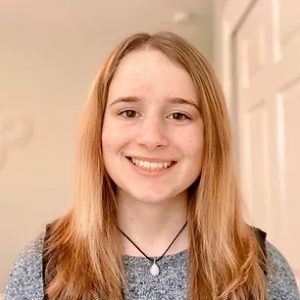
Room 116, Poster #11
Kean University
Mentors:
Lingjun Xie, Sagar Khare, Ph.D.
Center for Integrative Proteomics Research
Department of Chemistry and Chemical Biology
Rutgers, The State University of New JerseyStabilization of PETase using an unnatural amino acid to help break down PET
The rapid increase in the production of plastic disposable materials has surpassed the world’s capacity to handle them, making plastic pollution one of the most critical environmental problems. Polyethylene terephthalate (PET) is a clear, strong, and lightweight plastic that is considered to be one of the most manufactured thermoplastics available today. PET is a polymer containing ester bonds, which enables it to be more susceptible to biodegradation. In order for PET to be successfully broken down, enzymes must disassemble plastic into its smaller components and chemically reconstruct it back together. PETase is an enzyme that degrades the PET, but wild type PETase is not as efficient. This problem can be solved by increasing the stability of the PETase when using p-chloroacetamido phenylalanine (pCaaF) and converting it to a natural amino acid, like Tyrosine. This unnatural amino acid has the ability to stabilize proteins by crosslinking with cysteine. The glass transition temperature is around 70 degrees Celsius, so it would be easier for the PET to be digested at a higher temperature. Wild type PETase is not stable at that temperature, hence the thermal stability needs to be increased. We expressed the PETase pCaaF design and checked the expression via protein gel, but the results were not what we expected. There were no intense bends on the first design of the gel, meaning there is not an abundance of protein being overly expressed. However, we did notice that pCaaF was successfully incorporated in the other design. The experiment was performed a second time and we received the full-length protein in both designs, which indicates pCaaF mutated back to Tyrosine, but only in the pellet, instead of the supernatant. For future directions, we will try to revert additional mutations and find a more suitable buffer for those particular designs.
Biography: Sophie Bizink is from Clark, NJ and is currently a rising third-year biotechnology undergraduate student at Kean University’s New Jersey Center for Science, Technology, and Mathematics (NJCSTM). She has gained previous research experience working in the field of analytical chemistry at her home institution. She is also an active member of the Biotechnology Club, Research First Initiative (RFI), Independent Research, and will be tutoring NJCSTM students in general biology and chemistry this upcoming semester. In her spare time, she enjoys playing musical instruments, watching college basketball, and spending time with friends and family. At Rutgers University, she is a co-participant in the Advanced Materials REU and is studying how the stabilization of a specific enzyme paired with an unnatural amino acid can potentially break down the plastic material people produce in Dr. Sagar Khare’s lab. After completing her B.S./M.S. degrees, Sophie plans to pursue a PhD in biomedical engineering or materials science.
-
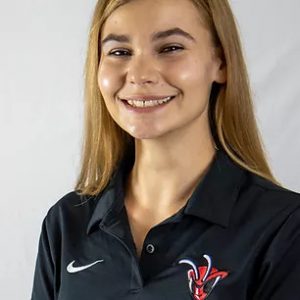
Room 116, Poster #12
Delaware State University
Mentors:
Lauren Hall, Max Häggblom
Department of Biochemistry and Microbiology
Rutgers, The State University of New JerseyMarine sponges naturally produce an abundance of organohalides. Organohalides are also produced by humans in industry for a variety of uses, and after being discharged into the environment they can accumulate throughout the food chain and negatively impact ecosystems in addition to our health. Intriguingly, marine sponges are inhabited by bacteria that are capable of removing the halogen from its aromatic ring as part of their respiratory metabolisms, i.e. through the process of reductive dehalogenation. These organohalide respiring bacteria are selected for by providing enrichments with a specific compound. The majority of previous research has been done using bromophenols, therefore selecting for specific strains that can debrominate bromophenols. The use of a pyrrole derivative may enrich bacteria for new substrate specificity. The compound ethyl-4-bromopyrrole-2-carboxylate (E4B) is similar in structure to the natural products of some sponges making it plausible that it could be successfully dehalogenated into ethyl-pyrrole-2-carboxylate (E1H) by the bacteria of those sponges. However, there is little information known about these two compounds. The objective of this research was to develop analytical methods for qualitative and quantitative analysis of E4B and E1H. The initial step was to determine the solubility of these compounds, their retention times in high performance liquid chromatography, and the limit of detection and quantification for each compound. The debromination of E4B was confirmed by inoculating media containing E4B with bacteria from the marine sponges Stylissa and Ianthella. It was determined that E4B was soluble in a 10% methanol, 90% water solution and a 2% sodium hydroxide, 98% water solution while E1H was found to be soluble in those solutions as well as a 100% water solution. Using an eluent of 60% methanol, 39% water, and 1% acetic acid, the retention times of these solutions ranged from 11.24 minutes to 3.23 minutes.
Biography: Kylie Bond is a rising senior at Delaware State University. She is a Forensic Biology major and a Chemistry minor with a passion for research in microbiology. Her current cumulative GPA sits at a 3.98 which has earned a spot on her university’s President’s List for the past five semesters. Working under Dr. Anthea Aikins at her home institution, she has been fortunate enough to study the microbial load in the orifices of pig carrion during the active stage of decomposition and the antimicrobial affects of selected ultraviolet and infrared lights. This summer Kylie had to opportunity to join Dr. Max Häggblom’s lab where she had the privilege to study the debrominating activity of anaerobic bacteria that inhabit marine sponges. Kylie plans to attend graduate school to earn her PhD in microbiology after graduation.
-

Room 116, Poster #13
Trinity University
Mentors:
Haoran Zhang, Ph.D., Lei Zhuang, YuXin Liu,
Department of Chemical and Biochemical Engineering
Rutgers, the State University of New Jersey – New BrunswickEffect of antibiotic and cell-lysis gene on Escherichia coli cell growth and phenol production
In the growing field of metabolic engineering, the production of valuable compounds used in industry is achieved by using cells as biological catalysts. However, cell growth and product biosynthesis are two processes competing for metabolic resources. In this study, cell growth of engineered E.coli was inhibited under various conditions to attempt to optimize the production of phenol. Genes were introduced into a previously engineered phenol-producer E. coli (P2H-proCtpl) via transformation of plasmids to create the strains P2H-proCtpl-mltB (JB2) and P2H-proCtpl-pET21c-T7 (JB3). Addition of the reagent Isopropyl ß-D-1-thiogalactopyranoside (IPTG) to JB2 cell culture induces the cell-lysis gene mltB, encouraging the inhibition of cell growth as a result of cleaving glycosidic bonds in the cell wall by MltB. Addition of the antibiotic erythromycin to JB3 cell culture results in the inhibition of protein synthesis in cells, also contributing to cell growth inhibition. Cell growth was monitored through measuring the cell density using a spectrophotometer. Phenol production was quantified using high-performance liquid chromatography (HPLC). Our results showed that the employed cell growth inhibition strategies indeed led to higher phenol production.A mathematical model was also used to simulate the cell growth for comparison between different inhibition conditions. Future research on the potential use of growth inhibition to maximize the synthesis of chemical products via metabolic engineering of E.coli cells is necessary to further support this approach to increased production of phenol and potentially other bioproducts using cells as biological catalysts.
Biography: Julie Bondy grew up in Austin, Texas where she first discovered her interest in industrial biotechnology. She currently is a rising 4th year student at Trinity University in San Antonio, Texas where she is majoring in Biology and Industrial Design and minoring in Chinese. Outside of classes and pursuing opportunities related to cell biology, Julie is an undergraduate researcher for Dr. James Shinkle’s plant physiology lab, where she studies the effect of UVB radiation on the curvature of plants. Additionally, she is involved in various organizations that promote service, diversity, and science, including being Co-founder of the student organizations Trinity Science Olympiad Alumni and Asian-American Pacific Islander Council. In her personal life, Julie enjoys doing art, dancing, and appreciating the environment.
-
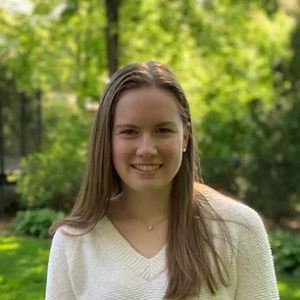
Room 116, Poster #14
Bucknell University
Mentors:
Dr. Shishir Chundawat
Dr. Chandra Kanth Bandi
Department of Chemical and Biochemical Engineering
Rutgers, The State University of New JerseyStudy the transglycosidase enzyme reaction kinetics using TLC and HPLC
The synthesis of oligosaccharides varies depending on the enzymes used in the reaction. Oligosaccharides are carbohydrates that contain multiple sugar compounds linked via glycosidic bonds. This project focuses on engineering transglycosidase enzymes for synthesis of glucose based oligosaccharides. Here, we studied the reaction kinetics of multiple glycosyl hydrolase family 5 (GH5) enzymes to synthesize oligosaccharides. The reactions were performed with GH5-CBM3a enzyme variants and pNP-cellobiose as the substrate. The products of the reactions were analyzed using pNP absorbance in spectrophotometer and thin layer chromatography (TLC). TLC identifies the synthesized oligosaccharides and is used to separate compounds based on their properties and how they interact with the stationary phase and mobile phase solution. The TLC plates containing the compounds were imaged under ultraviolet light and after orcinol staining. Image Lab software can be used to obtain concentration values of pNP-cellobiose produced in the reaction based on the staining intensity. The unknown concentrations are compared with the standard concentrations of pNP-cellobiose to determine the quantity produced. Additionally, high-performance liquid chromatography (HPLC) was used to analyze the reaction products to get an accurate quantification of synthesized products that are difficult to identify using TLC. Using both these techniques, the amounts of reactants and products were identified and a reaction kinetics profile was built for various GH5-CBM3a constructs.
Biography: Kelsey Boyle is from Glen Rock, NJ, and is currently studying biomedical engineering at Bucknell University. She is the Academic Development Director for Kappa Alpha Theta and serves as a mentor for biomedical engineering first-year students. She is also a member of E-NABLE club, which designs and 3D prints prosthetic hands to be donated to members of the community. This summer she worked under the guidance of Dr. Shishir Chundawat and Dr. Chandra Kanth Bandi at Rutgers University studying the transglycosidase enzyme reaction kinetics using TLC and HPLC testing.
-

Room 116, Poster #15
Kenyon College
Mentors:
Deepanjali Verma, Ph.D., Juan Dong, Ph.D.
Waksman Institute of MicrobiologyFunctional characterization of BSL, a novel polarity protein
Stomata are pores in plant leaves that are responsible for gas exchange and water balance. The development of stomata is an important aspect of plant development which initiates when a protodermal cell acquires the identity of a meristemoid mother cell (MMC). MMC divides asymmetrically into two daughter cells. Smaller cells (Meristmoid) undergo symmetric divisions and form stomata (a pair of guard cells) and the larger cells give rise to pavement cells. These divisions are regulated by key transcription factors SPEECHLESS (SPCH), SCREAMs (SCRM/ICE1 and SCRM2), FAMA, and the intrinsic polarity factors such as BREAKING OF ASYMMETRY IN THE STOMATAL LINEAGE (BASL). Recent studies have identified a novel family of polarity proteins BSL, which have been shown to act as a molecular switch from division to differentiation in stomatal development. To further understand the function and regulation of these BSL proteins, it is very important to identify their interacting partners. Therefore, the current project will focus on identifying the interacting partners of BSL. Potential candidates were cloned into suitable vectors and In planta interaction techniques such as Bimolecular Fluorescence Complementation (BiFC) will be used to detect interactions between BSL and other proteins.
Biography: Victoria Brown is a rising senior at Kenyon College studying molecular biology and anthropology. She is heavily involved at her home institution as a teaching assistant, STEM mentor, and executive board member of her sorority. Additionally, she does undergraduate biochemistry research on identifying transport proteins in the yellow fever mosquito 𝐴𝑒𝑑𝑒𝑠 𝑎𝑒𝑔𝑦𝑝𝑡𝑖. In her spare time, she enjoys going on walks with her friends, reading, and playing card games. This summer, she joined Dr. Juan Dong’s lab, whose research focus is stomatal development. Because of her research opportunities both at her home institution and at Rutgers, she plans on applying to cellular and developmental biology Ph.D. programs in the fall. Her career goal is to become a professor and mentor, especially for BIPOC students in STEM.
-
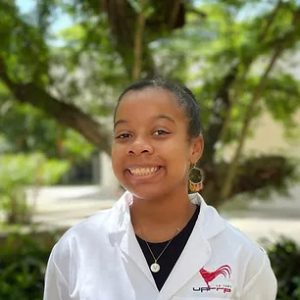
Room 116, Poster #16
University of Puerto Rico
Mentors:
Alex Barrett, Ariane Vasilatis, and James E. Simon
New Use Agriculture and Natural Plant Products Program, Rutgers University, Department of Plant Biology-Foran Hall, 59 Dudley Road New Brunswick, New Jersey 08901Utsav Kumar
Soli Organics, 3156 N Valley Pike, Harrisonburg, VA 22802Aroma volatiles of basil (Ocimum spp.) as impacted by variety and time of day
The aromatic profile of plants can vary in response to environmental changes and cultural practices. Harvest time, the genetics of the plant and the stage of maturity can also have significant effects on the essential oil profile and thus the aromatic bouquet of culinary herbs. Understanding the accumulation pattern of aroma compounds over the day is a fundamental step in product standardization and the establishment of protocols that fosters consistent and reliable results when addressing biological question. For commercially important crops such as sweet basil, elucidating the effect of these conditions can provide a way to optimize future harvest timelines. Specific aromatic profiles can then be targeted through harvest at defined time points, to maximize the ratio and accumulation of targeted aromas. In this study we examine the aroma profile of three varieties of sweet basil (Ocimum basilicum L.): Rutgers’ Devotion DMR, Burpee’s Sweet Genovese, and a Thai basil, Queenette Thai (QT) basil, over the course of a single day. The time points studied were 5:30 am, 9:00 am, 12:00 pm, 3:00 pm and 6:30 pm. Basil aroma compounds will be analyzed using Gas Chromatography Mass Spectrometry (GC-MS) and a Solid Phase Microextraction methodology.
Biography: Victoria M. Casimir Montán, born in Puerto Rico, is a rising senior majoring in Chemistry at the University of Puerto Rico Río Piedras Campus (UPRRP). At her institution, she is part of the Research Initiative for Student enhancement (RISE) program. She is also a National Hispanic Scholar. Victoria conducts research at the University of Puerto Rico Medical Sciences Campus with Dr. Eduardo Caro where she works on a Bioassay-guided-fractionation and isolation of SARS-CoV-2 ACE-2/Spike inhibitors from the brown algae Lobophora Variegata. Outside academics, Victoria enjoys internal tourism, along with traveling and enjoying the gastronomical variety, hidden spots, and culture each place has to offer. After graduation, she hopes to pursue graduate studies in Pharmacognosy and get a PhD.
-

Room 116, Poster #17
Duquesne University
Mentors:
David I. Shreiber, Ph.D., Kelly Kyker-Snowman, Ph.D.
Department of Biomedical Engineering
Rutgers, The State University of New Jersey
High Grade Serous Carcinoma (HGSC) is the deadliest subtype of ovarian cancer, resulting in mortality rates near 70%. Such grim prognostic outcomes for HGSC are largely due to peritoneal metastasis. Critical to the metastatic cascade are the epithelial-mesenchymal and mesenchymal-epithelial transitions (EMT and MET) that alter metastasis phenotypes to facilitate escape (EMT) and implantation (MET). Although the mechanisms driving EMT have yet to be completely elucidated, stiffness of the primary (ovary) and secondary (peritoneum) tumor microenvironments have been proven to influence metastatic progression. Previous studies have used polymeric substrates to model the effects of different stiffnesses on peritoneal metastasis. However, these materials lack biological relevance. Moreover, previous studies do not examine escape and implantation with the same materials, precluding comparisons of phenotypic progression. In this research, we use collagen methacrylamide (CMA) to mimic peritoneal tissues of different stiffness. CMA comprises type-I collagen, which is the primary structural molecule of most soft tissues, functionalized with photoreactive groups that can be UV-crosslinked to modulate stiffness. We have analyzed dissemination of cells from HGSC spheroid cultures, as a model of microtumors, embedded within gels to model EMT and seeded on top of gels to model MET.
Spheroids were grown from the HEYA8 HGSC ovarian cancer cell line, normal human ovarian fibroblasts (HOFs), and both HEYA8 and HOF cells. Spheroids were then transferred within or on top of agar, collagen type-I, and CMA gel. Confocal microscopy images for each spheroid type and substrate condition were collected over three days. Escape from the spheroid was measured with spheroid spread area and relative cell localization. Preliminary data supports the notion that stiffness plays an important mechanoregulatory role in metastasis, as spheroids embedded in and on top of stiff CMA show a higher dissemination. With these results, we plan to study other biomechanical cues that influence microtumor phenotype change during metastasis.
Biography: Burton “Tony” Carbino IV is a rising fourth-year biomedical engineering student from Yardley, Pennsylvania. He attends Duquesne University, where he studies biomedical engineering and minors in mathematics. During his undergraduate career, Tony has served as a teaching assistant in the biomedical engineering department, and has conducted research in computational biomechanics, biomaterials in pharmaceutics, and tissue engineering. From 2020-2022, Tony conducted research on abdominal aortic aneurysms (AAAs) and was the first author of a paper that studied the role of intralumal thrombus (ILT) on AAA rupture. While his research interests are broad, his goal as a biomedical engineer is singular: create patient-specific care technologies that improve quality of life. With compassion at the center and curiosity at the helm, Tony hopes to pursue a PhD in translational medicine, or become a Doctor of Osteopathic Medicine following his undergraduate studies.
-

Room 116, Poster #18
Hendrix College
Mentors:
Christine Zardecki, Brian P. Hudson, Ph.D , Stephen K. Burley, Ph.D
RCSB Protein Data Bank, Rutgers University
Institute for Quantitative Biomedicine, Rutgers UniversityJoseph H. Lubin, Ph.D, Zhoufan Shen, Ph.D, Sagar Khare, PhD
Department of Chemistry and Chemical Biology
Institute for Quantitative Biomedicine, Rutgers UniversityComputational Analysis of Potential SARS-CoV-2 Main Protease Mutations Resistant to Paxlovid
The Severe Acute Respiratory Syndrome Coronavirus 2 (SARS-CoV-2) pandemic has led to an urgent need for antiviral medication. The US Food and Drug Association (FDA) has approved the emergency use of Paxlovid for the treatment of mild-to-moderate SARS-CoV-2. Paxlovid combines ritonavir and nirmatrelvir to inhibit the main protease 3CLpro (also known as Mpro) of SARS-CoV-2 and prevent its replication. Mpro, a cysteine protease, cleaves a polypeptide into non-structural proteins that are crucial for the replication of the virus (Jochamns et al. 2022). Previous studies have shown that Mpro is highly conserved and resistant to mutations in the active site, making it an attractive target for drug design (Lubin et al. 2022). However, as SARS-CoV-2 evolves, mutations in Mpro can lead to Paxlovid resistant strains. Pfizer’s release of nirmatrelvir has led to the development of various potential inhibitors that will function against future resistant strains of SARS-CoV-2. In this research, we use computational modeling and analysis of experimental SARS-CoV-2 structures archived in the Protein Data Bank (PDB) to identify potential escape mutations that might limit the effectiveness of inhibitors against SARS-CoV-2. To identify potential escape mutations, we curated a dataset of potential inhibitors using Mol* to visualize various Mpro-ligand complexes deposited in the PDB. Rosetta software is used to generate structural models of Mpro mutants to identify mutations that preserve Mpro function but are energetically unfavorable for inhibitor binding. Identification of potential escape mutations and inhibitors for SARS-CoV-2 may potentially mitigate future coronavirus pandemics, should another coronavirus jump the species barrier to humans.
Biography: Emma Chavez is a rising senior at Hendrix College in Conway, Arkansas. In the Spring of 2023, she will be graduating with a Bachelor’s in Biochemistry and Molecular Biology with a Physics minor. Emma is an NSF funded S-STEM Scholar, a program designed for underrepresented students pursuing careers in STEM. She has worked in a computational chemistry research lab at her home institution for the past 2 years. This summer, she had the opportunity to work with the Protein Data Bank and Dr. Khare’s lab doing computational chemistry and analysis of the SARS-CoV-2 main protease (MPro). Although Emma’s research experience is in computational chemistry, she is interested in pursuing a career in Biomedical Engineering. In the future, Emma plans to attend graduate school with a focus on Biomedical Engineering or Biochemistry. She hopes to travel, and help underrepresented communities gain exposure to STEM fields.
-

Room 116, Poster #19
University of Puerto Rico- Rio Piedras
Mentors:
Kathe Newman, Eric Seymour, Lauren Nolan
Has the gold coast expanded? change in three communities between Hoboken and Jersey City
Gentrification is a process of neighborhood change of the profit rate which adjusts to the tastes of the middle class and tends to expand to surrounding neighborhoods. Gentrification is often related to the polarization, uneven development, and displacement of long-time residents. I look at whether and how the process of gentrification has been expanding from New York City to three neighborhoods in Hudson County, New Jersey, North Bergen, Union City, and West New York in the last 20 years. To explore gentrification processes, I am describing and analyzing the housing, transportation, and commercial features of each neighborhood using visual inspection and analysis, by reviewing the literature on these neighborhoods, and by analyzing data from the American Community Survey, Building Permits, Public and Federally Assisted Housing, municipal rent control policies, and government and non-profit organization websites. I found that the ways that these neighborhoods are changing in housing, commercial, and transportation are related to the process of gentrification expanding from New York City. Studying the way gentrification is developing in these neighborhoods will help to better understand whether and how these neighborhoods are experiencing gentrification to inform further research and policy discussions.
Biography: Esther Colón-Bermúdez is a rising senior at the University of Puerto Rico, majoring in Anthropology along with a minor in Human Rights. At her institution, she is part of the Honors Studies Program and is doing a thesis in urban anthropology with Carmen A. Pérez-Herranz. As part of the RISE program, this summer she is working with Kathe Newman and Eric Seymour on a project about housing insecurity in New Jersey. Her research interests are housing and neighborhood change, especially about her neighborhood in Puerto Rico, Santurce. She enjoys volunteering for Pro Bonos from UPR Law School to advance legal services to people from the Caño Martín Peña. Esther intends on pursuing a career in urban planning, with the hope to help create neighborhoods with more social justice and where we can all live.
-
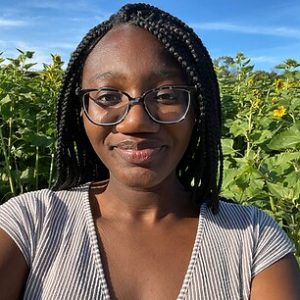
Room 116, Poster #20
Oberlin College
Mentors:
Lauren M. Walker
Department of Pharmacology and Toxicology
Rutgers, The State University of New JerseyLauren M. Aleksunes
Department of Pharmacology and Toxicology
Environmental and Occupational Health Sciences Institute
Rutgers, The State University of New JerseyCytokine expression and toxic heavy metals in human placentas
Cadmium (Cd) exposure has been associated with pregnancy complications such as preterm birth and pre-eclampsia. Understanding the cellular mechanisms involved in Cd exposure can shed light on the effects of metal contaminants on placental function. We speculate that Cd could alter inflammatory signaling in the placental immune system and inform potential therapeutic targets to improve the health of pregnant women. For this purpose, we sought to investigate the relationship between cadmium accumulation in human placentas and the expression of four cytokines (Interleukin-1β, IL-1β; Interleukin-8, IL-8; Interleukin-10, IL-10; and Tumor Necrosis Factor-α, TNF-α). Healthy term human placental biospecimens (N=26) were collected at birth. Cd content was assessed using inductively coupled plasma mass spectrometry and cytokine expression was measured using enzyme-linked immunosorbent assays. The median Cd level in the human placentas was 1.9 ppb (range 0.7-6.4 ppb). Placenta samples were divided into a higher Cd content group (N=13) and a lower Cd content group (N=13) based on the median Cd concentration. Levels of pro-inflammatory cytokine expression were compared between placentas with <1.9 versus >1.9 ppb cadmium using t-tests. and no differences were observed: IL-8 (p=0.38), IL-1β (p=0.24), IL-10 (p=0.30), and TNF-α (p=0.29). In a healthy population, relationships between Cd accumulation in the placenta and enrichment of cytokines were not observed. Future studies may include placentas from pathologic pregnancies or with a greater range of Cd exposures. Overall, a comprehensive understanding of such mechanisms can contribute to improvements in maternal health.
Biography: Faythe Cooper (she/her) is a rising junior at Oberlin College majoring in biology. At Oberlin, she is involved in the Biology Majors Committee and has served as a member of the HHMI Student Leadership Committee. This upcoming academic year, she will be chairing the Black Scientists Guild. In 2022, Faythe conducted molecular genetics research under the mentorship of Professor Maureen Peters at her home institution. Following this, she was selected to participate in the SURF and RISE programs at Rutgers University to study toxicology under Dr. Lauren Walker in the Aleksunes lab. The Aleksunes lab investigates the adverse pregnancy effects that result from environmental chemical exposure. Faythe would like to thank the Aleksunes lab, her RISE and SURF colleagues, and her family for their support and encouragement.
-
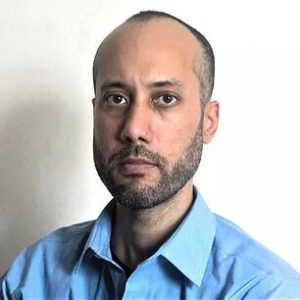
Room 116, Poster #21
University of Puerto Rico-Humacao
Mentors:
Nasir Javed and Dr. Deirdre O’Carroll (Rutgers Material Science and engineer)
Plastic is one of the most used and discarded materials on the planet. One of the big challenges to recycling plastic is finding an efficient method to obtain valuable materials that can be reused. The objective of this project is to convert waste plastic into carbon dots (CDs) by solvothermal carbonization. CDs are a new class of luminescent carbon nanomaterial that possess properties such as excitation-wavelength-dependent photoluminescence, high quantum yield, and low toxicity. They have potential applications in bioimaging, sensing and thin-film optoelectronic devices.
This main aim of this project is to demonstrate and study the carbonization mechanisms of polypropylene (PP), a common consumer plastic. A recipe was created for initial carbonization studies that involves (1) dissolving the PP, (2) heating the PP solution under high pressure and temperature, and (3) characterization of the product. To dissolve PP, 30 mg or 100 mg of PP pellets is added to 10 mL of toluene. Then, the mixture is heated at 100 ˚C for 1 h. Once the PP is dissolved, the solution is placed in an autoclave and is heated in a vacuum oven at temperatures between 230 ˚C to 300 ˚C. For this process, the solutions were heated for between 3 to 15 h to determine the most efficient time for carbonization.
By exposing the solution to high temperatures, chemical changes are observed through UV-visible absorption spectroscopy. Absorption peaks are found between the wavelength ranges 300 nm to 400 nm. The solution containing of 30 mg of PP that is exposed to 260 ˚C for 15 h shows the most intense absorption peak at a wavelength of 325 nm. The results show that the higher the temperature of exposure to the solution, the stronger the UV absorption peaks, which suggests a greater degree of conjugation of the PP. However, further characterization by infrared spectroscopy is needed to determine the extent to which the solution is carbonized. A sulfonation step is also being investigated as a means to increase the degree of carbonization of PP.
Biography: Elvin Cordero is a senior student at the University of Puerto Rico at Humacao and his concentration is Physics applied to Electronics. Elvin has participated in different research internships at Big 10 universities and has participated in several scientific conferences. In addition to his studies in physics, he has participated in a special program at the Pennsylvania State University where he has taken specialized courses in nanotechnology at the center for the Education and use of Nanotechnology (CNEU) certified by the director of CNEU Dr. Osama Awadelkarim and the department head-engineer science and mechanic Dr. Judith A. Todd. He has been president of the university Catholic ministry and has received several awards for his work as an undergraduate researcher at his university. He has also helped students by counseling them to find research internships and tutoring them in math and physics. His plans are to pursue a PhD in Physics and do graduate research in molecular physics.
-
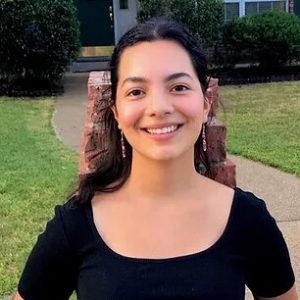
Room 116, Poster #22
Bard College
Mentors:
Isabela I. Cruz-Vespa, B.A., Jacqueline E. Smith, M.S., Samantha G. Farris, Ph.D.
Department of Psychology
Rutgers, the State University of New JerseyEmotion dysregulation has been found to result in a susceptibility to drug-use (e.g., smoking) in order to down-regulate distressful emotional states (Gonzalez et al., 2008). In addition to being more likely to be diagnosed with anxiety and mood disorders, both of which are characterized by disturbances in emotion regulation, women have also been found to be less successful than men in quitting smoking (McLean et al., 2011; Smith et al., 2016). In the interest of informing future interventions tailored to the needs of women, the current observational study examined if increased moderate-to-vigorous physical activity (MVPA), an adaptive way to cope with stressors, moderated the relationship between baseline-level emotion dysregulation and daily nicotine consumption over the course of a menstrual cycle in female, non-treatment-seeking smokers (Bernstein & McNally, 2018). We hypothesized that there will be a weaker relationship between emotion dysregulation and daily nicotine consumption on days in which participants do more MVPA than their average. Emotion dysregulation was measured at baseline using the Difficulties with Emotion Regulation (DERS) scale, daily cigarette consumption was measured using Ecological Momentary Assessment (EMA), and daily amount of time spent doing MVPA was measured using wrist-worn Actigraph accelerometers. Emotion dysregulation was not a significant predictor of subsequent cigarette consumption on the daily level. However, an increase in the amount of time per day engaged in MVPA predicted a higher daily number of cigarettes consumed on average (p < 0.05). While an increase in moderate-to-vigorous physical activity did not reduce cigarette consumption in the current study, experimental research is needed in order to further test the effectiveness of physical activity, as well as to better understand the relationships between these variables. Future research should examine the efficacy of lower-intensity physical activity as an intervention, in addition to other health-behaviors.
Biography: Isabela Cruz-Vespa, from College Station, Texas, is a recent graduate of the Bard College Conservatory of Music dual-degree program, where she earned degrees in both psychology and music performance. While at Bard, she studied and worked in the Regulation of Everyday Affect, Craving and Health Psychology Lab under Dr. Richard Lopez, and completed a 4th-year Psychology senior thesis on the topic of how Identity-Uncertainty often leads vulnerable adolescents to join high-risk groups such as cults, fraternities, and extremist groups. During that time, Isabela also became interested in how risk factors such as social disconnection, food-insecurity and hypervigilance are linked to chronic disease and mental illness in marginalized populations. Her passion for public health led her to work in positions such as the Bard Director of Transportation for Community Medical-Appointments, the Food-Systems Intern for BardEATS, a help-line worker at the Ulster Immigrant Defense Network in Kingston, NY, as well as the founder of the Bard Musicians’ Wellness Program. After completing her RISE program summer research at the Rutgers Emotion, Health and Behavior Lab under Dr. Samantha Farris, she will be moving to California to work in the Social Health & Affective Neuroscience Lab of San Diego State University, where she will study the role that endogenous opioids play in social connection, and its implications for both the opioid and loneliness epidemics in America.
-

Room 116, Poster #23
Bard College
Mentors:
Rahma Mbarki, Marta Mielicki, Ph.D., Jinjing (Jenny) Wang, Ph.D.
Department of Psychology and Center for Cognitive Science
Rutgers, The State University of New JerseyCognitive abilities are present during infancy. More specifically, research shows that infants are able to distinguish between non-symbolic numerical abstractions. Though this is so, many adults and children overestimate the age of onset for certain cognitive abilities. Such misattributions of abilities are important to address as they could influence an individual’s perception of self and their capabilities. Thus, this study works to inform cognitive research by examining how discussions of innate abilities may influence the way people perceive themselves and what they can do. In this study we show participants two different videos that discuss what influences one’s intellectual grasp of mathematical concepts. One video emphasizes the power of innate abilities, while the other one emphasizes sources of learning and practice. In regards to measures of affect, we will be measuring math anxiety and confidence, while performance will be measured through a basic math task that taps into core numerical ability. We expect to see a decrease in negative affect and an increase in accuracy of math problems in the group with core numerical ability emphasis. Such findings are important as math is all throughout the world and assists us in the way in which we make choices. Moreover, if adults constantly fear math, then such fear may be passed down to future generations, increasing the likelihood of poor life decisions.
Biography: Amanda ‘Mandy’ Derrell is a rising senior at Bard College. Amanda is majoring in Psychology with the intention of pursuing graduate studies in either social or developmental psychology. Amanda has been on the Honors List throughout all of her years at Bard. She is also a member of the Psi Chi Honor Society- Bard Chapter. At Bard, she works as an assistant lab manager in the Memory Dynamics Lab under Dr. Justin Hulbert, investigating heart rate variability and sleep patterns. Outside of the classroom, Amanda enjoys her position as Chair of the Multicultural Diversity Committee, promoting equity and inclusion throughout her campus, as well as her role as club head for the Caribbean Student Association. In her free time Amanda loves to sing, read, cook, and watch informative videos. This summer she is working in the Cognition and Learning Lab (CALC) under the supervision of Dr. Jinjing (Jenny) Wang. Her project this summer focused on the promotion of awareness of core numerical ability and its influence on affective responses to math and math performance. Amanda thanks Dr. Wang, as well as Dr. Mielicki and the other CALC lab members for their guidance and support over the summer.
-

Room 120, Poster #1
Dillard University
Mentors:
Jailen Doyle
Department of Chemistry
Dillard UniversityChisom Enekebe, Namrata Martharoo, Bozena Michniak-Kohn, Ph.D.
Center for Dermal Research
Ernest Mario School of Pharmacy
Rutgers, The State University of New JerseyDevelopment and characterization of diclofenac sodium loaded liposomes
Diclofenac sodium is a commonly used and marketed oral treatment for osteoarthritis. Some common side effects observed in patients are: gastritis, decrease in renal function, and mucosal irritation. Liposomal drug delivery systems have been known to reduce drug side effects as well as protect the drug loaded from degradation. This study aims to produce diclofenac sodium loaded liposomes that mitigate side effects, increase efficacy of diclofenac sodium, and aid in patient compliance. Liposomes loaded with diclofenac sodium were prepared by the thin film hydration method and characterized for particle size, encapsulation efficiency, and polydispersity index (PDI). After preliminary studies, the optimized formulations were characterized. The 70:30 and 80:20 formulations were optimized to produce a homogeneous suspension of liposomes.
Biography: Jailen Doyle, born in New Orleans, LA is a rising senior Chemistry major. She currently attends Dillard University and plans to graduate in the Spring of 2023. Jailen is the President of the American Chemical Society Chapter on Dillard’s campus. She is also a U-RISE Research Scholar and member of the Thompson Cook Honors Program, Beta Kappa Chi Scientific Honor Society, and the Alpha Kappa Mu National Honor Society at Dillard University. She has been on the Dean’s List every semester since her freshman year. In her spare time, she is a Verizon College Mentor, and ACT Tutor to youth in the Greater New Orleans Area. Jailen is planning on pursuing a Ph.D. in Pharmaceutical Sciences in the Fall of 2023.
-
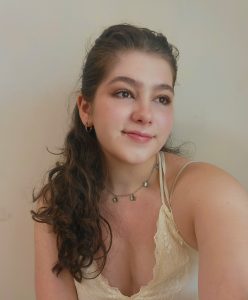
Room 120, Poster #2
South Dakota School of Mines & Technology
Mentors:
Andy Mastbaum, Ph.D.
Department of Physics
Rutgers, The State University of New JerseyNeutrinos are the most abundant massive particles in the universe, yet little is understood about them. Neutrinos are produced when atomic nuclei come together or break apart. They are very light and neutral, interacting weakly with other matter and thus, making them extremely difficult to detect. However, the measurement of neutrino properties might help to solve the puzzle of how our universe is able to exist and what it is really made of. Liquid argon time projection chamber (LArTPC) detectors in accelerator-produced neutrino beams enable measurement of neutrino interactions with unprecedented precision.
Using the data that a LArTPC provides, a cross-section can be measured, describing the likelihood of a charged-current muon neutrino scattering on argon atoms and leading to final states containing zero mesons and zero protons (νμCC0πXp), an important process for precision neutrino oscillation analyses planned for upcoming neutrino projects. In this work, we have adapted an existing LarTPC event selection to target this event topology, and studied the performance for future measurements.
Biography: Serenity Engel is a rising senior at South Dakota School of Mines and Technology in Rapid City, South Dakota. Serenity is pursuing a bachelor’s degree in physics where she hopes to gain the skills for a career in experimental physics research. She has experience working in particle physics through LUX-ZEPLIN, the Majorana Demonstrator, DUNE, and now with the instruction of Dr. Andy Mastbaum, MicroBooNE. Outside of the lab, she is an active member of several professional organizations, carrying the title of APS ambassador, SPS Associate Zone Councilor, and as Assistant Area Coordinator of her university’s Residence Life program. She loves to cook and enjoys crafting in her free time. Serenity plans to use her experience to obtain a Ph.D. in physics with an interest in neutrino research.
-
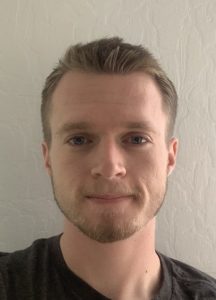
Room 120, Poster #3
University Of South Carolina (USC)
Mentors:
Doctor Amitabh Lath
Department of Physics and Astronomy
Rutgers, The State University of New JerseyAnalysis of dimuon mass excess in Higgs boson decay to the bbμμ final state
In a search for new particles beyond the standard model, we look for Higgs Boson decay channel to a dimuon and b-quark pair. According to data recorded from ATLAS between 2015 – 2018, a 3.3σ excess of events in the H → aa →ƀb μ-μ+process occurred where the dimuon mass is 52 Gev. Here, the predicted a-boson is a new particle that would exist as a part of an extended Higgs model. The proton-proton collisions are reconstructed using data collected from the CMS detector. Because muons can exist on their own without becoming jets like the b-quarks, muons give a more precise calculation of their parent particle’s mass. Analyzing the distribution of dimuon mass is a common technique for finding dimuon resonances, and this technique is used as a first step to determine if reconstructed resonances, such as our predicted a-boson, are statistically significant.
Biography: Caleb Fairchild is a rising Senior Physics major at The University of South Carolina (USC). During his time at USC, Caleb has maintained a high GPA and has been on the President’s and Dean’s list throughout his college career. Caleb is looking to further pursue areas of Particle Physics and Medical Physics in graduate school.
-
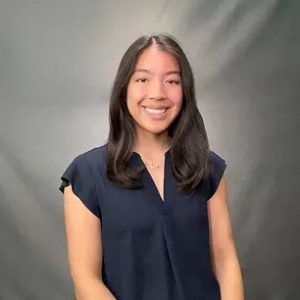
Room 120, Poster #4
Cornell University
Mentors:
Nicole Wagner, Dina M. Fonseca
Center for Vector Biology, Entomology, Rutgers University, New Brunswick, NJ USAWhere did the mosquitoes that transmit bird malaria in Hawaii come from?
Culex quinquefasciatus mosquitoes were first introduced to Hawaii in the 1830s where they became a significant human nuisance. One hundred years later they started transmitting bird malaria to Hawaiian endemic birds such as the Hawaiian honeycreepers contributing to their endangerment and extinction. While it is thought the original Cx. quinquefasciatus came from the Americas, the genetic signature of current populations instead matches those in Australasia. The purpose of our project is to use a NextGen gene-based capture assay to test if differences in insecticide resistance drove the broad replacement of the American strain by the Australasian strain of Culex mosquitoes in Hawaii. As opposed to older population genetic techniques that focused on variability at neutral loci, our capture assay targets 137 highly variable exomic regions in the genome of Culex pipiens group as well as ~350 genes known to be associated with insecticide resistance in mosquitoes. This project will help understand ecological and evolutionary consequences of multiple introductions of disease vectors. Furthermore, we are also testing the usability of the capture assay to sequence critical insecticide resistance genes in other important Culex mosquitoes for which little to no genetic information is available, such as Cx. restuans, a critical zoonotic vector of West Nile virus in the US. So far we have found that the capture assay can successfully capture DNA from Cx. restuans although we had to lower the hybridization and wash temperatures to account for the differences in sequences. Specifically, when using 65℃, the average recovered DNA concentration for Cx. quinquefasciatus was 6.98 ng/μL, for Cx. pipiens f. molestus it was 5.48 ng/μL while for Cx. restuans it was too low for readings with a highly sensitive Qubit Fluorometer. Using 60℃, the DNA concentrations for Cx. restuans were 2.76 ng/μL on average indicating the capture was successful although subsequent NextGen sequencing will determine the extent of the success. These results suggest gene-based capture assay is a cost-effective strategy to obtain information on insecticide resistance in non-model mosquitoes, and ultimately will help develop better strategies to limit its spread. The overall project is ongoing, and findings will impact efforts to control Culex mosquitoes in Hawaii and elsewhere where they transmit disease agents to people, companion animals, and wildlife.
Biography: Kaitlyn Fang is from Morris County, New Jersey and is currently an entomology student at Cornell University. Under the mentoring expertise of Dr. Dina Fonseca at the Center for Vector Biology at Rutgers University, she was able to determine the success of using a gene-based capture assay to collect insecticide resistant genes in non-model mosquitoes. She is very fortunate for this research opportunity through RISE/SURF where she was able to meet and collaborate with inspiring individuals.
-

Room 120, Poster #5
Kean University
Mentors:
Ryan Almeida and Julie Lockwood, PhD
Department of Ecology, Evolution, and Natural Resources
Rutgers, The State University of New JerseySocial media’s influence on exotic wildlife interest
The global wildlife trade industry is ever-changing, as society finds new ways to interact with a growing number of species. In conjunction with the growing demand for global wildlife trade, social media has become an increasingly powerful tool to communicate and market ideas, services, and goods. Previous studies have demonstrated how social media has been used to advertise and facilitate the sale and purchase of wildlife (products). However, the role that social media platforms play in generating interest in exotic animals, a known driver of participation in the wildlife trade, is less well understood. Social media platforms promote their content using algorithms based on how users interact with the site. Therefore, we ask: How do social media algorithms drive interest in acquiring exotic wildlife? We hypothesize that accounts that engage more with animal content will be more likely to be recommended content depicting exotic animals. We also hypothesize that exotic wildlife content will have higher engagement, showing greater interest, and subsequently demand, for these animals. In this study, we categorize and analyze content recommended to Instagram accounts designed to represent users with varying levels of interest in exotic wildlife. Our results show that the accounts representing users with greater interest in exotic wildlife were more likely to be recommended content depicting exotic wildlife than users that expressed interest in no wildlife or domestic wildlife. Contrary to our hypothesis, posts containing exotic wildlife had lower engagement (total “like” count) than posts depicting domestic animals. These results suggest that while exotic animals can be easily seen on social media, the content may be more likely to increase interest in users already seeking out exotic wildlife rather than expanding it to the general public.
Keywords: exotic wildlife, social media, algorithms, wildlife trade, exotic animals, engagement
Biography: Essence Gandy is a rising senior majoring in Environmental Biology at Kean University. At Kean, she is an LSAMP scholar and participated in the Research Recruits program in the spring of 2022. Outside the classroom, Essence enjoys trying new restaurants, exploring the outdoors, and spending time with family and friends. She would like to thank Dr. Julie Lockwood and Ryan Almeida, as well as Dr. Erenrich and the RISE team, for making this amazing experience possible. In the future, Essence plans to attend graduate school and continue research on biodiversity conservation or a similar subject.
-

Room 120, Poster #6
New York University
Mentors:
Megan Hansel, MPH, Emily S. Barrett, PhD, and Zorimar Rivera-Núñez, PhD
Environmental and Occupational Health Sciences Institute and Rutgers School of Public Health
Rutgers, The State University of New JerseyNeighborhood stress and prenatal anxiety and depression
Public health research has been focusing increasingly on the environmental and social factors that may influence adverse maternal health outcomes, rather than only the individual-level factors (e.g., personal behaviors and genetics). Neighborhood characteristics have been associated with residents’ quality of mental health. Mental wellbeing is critical during pregnancy, as mental health disorders relate to complications, including preterm birth and infant mortality. We hypothesized that pregnant women living in neighborhoods experiencing greater social disorder and violent events will report higher levels of anxiety and depression. Of 326 pregnant women recruited through the Understanding Pregnancy Signals and Infant Development cohort in Rochester, New York, data from 248 were used for analysis. Neighborhood stress was measured using the City Stress Inventory Questionnaire, while anxiety and depression were measured using the Penn State Worry Questionnaire and the Edinburgh Postnatal Depression Scale, respectively. Using Statistical Analysis System (SAS) software, we utilized linear regression models adjusted for maternal age, race, ethnicity, marital status, education, BMI, smoking, parity, gravidity and fetal sex. Participants in the highest neighborhood disorder quartile reported a higher number of depressive symptoms (β = 2.13; CI95% = 0.21, 4.05) compared to those in the lowest disorder quartile. Additionally, participants reporting neighborhood violence quartile scores reported a higher number of depressive symptoms (β = 1.80; CI95% = 0.16, 3.43) compared to women reporting no neighborhood violence. There was no statistically significant association between neighborhood disorder or violence and anxiety. Our results suggest that neighborhood stressors can adversely impact depressive symptoms during pregnancy. Public health interventions targeted towards alleviating neighborhood stressors may improve prenatal mental health which, in turn, may produce more favorable birth outcomes.
Biography: Michaela Greenlee is a rising junior and Presidential Honors Scholar at New York University, where she is majoring in Global Public Health and minoring in Child & Adolescent Mental Health Studies. She intends to apply to graduate school for a Master of Public Health degree and eventually a PhD. Her research interests include studying how to mitigate the burden of unfavorable social determinants of health and its disparities, including mental health access and food insecurity in racial/ethnic minority populations. At NYU, Michaela holds a research assistant position at the Culture, Emotion & Health Lab where she studies how cultural tendencies and values can shape the development of health and wellbeing. Outside of the lab, she enjoys volunteering as a Health Educator at Peer Health Exchange, leading the NYU First Generation & Low-Income Society for Public Health Students, and organizing service events on-campus as a Service Ambassador. Ultimately, Michaela hopes to pursue a career as a public health professor and researcher at a university to train the next generation of scholars.
-
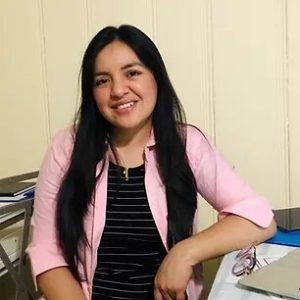
Room 120, Poster #7
William Paterson University of New Jersey
Mentors:
Authors: Cinthia Guerrero1, Luigy Cordova2, Daniela Rosembloom2, Dr. Martha Soto.2
1 William Paterson University of New Jersey – Department of Biology & Biotechnology. Wayne, NJ
2 Robert Wood Johnson Medical School – Department of Pathology, 675 Hoes Lane Piscataway, NJ 08854
Searching for the GEF that activates the GTPase Rac1/CED-10 during cell migrations in C. elegans
Cell migrations during morphogenesis is essential for the development of embryos in C. elegans and other multicellular organisms. Mutations in cell migration proteins can lead to birth defects, or to diseases like metastatic cancer. Previous studies from Dr. Soto’s lab indicated that embryos reorganize their F-actin for the process of epidermal cell migration that results in embryo enclosure. Additionally, they discovered the proteins and mechanisms regulating cell migration in embryos. They identified extracellular signals, sensed by membrane receptors, that activate the CED-10/Rac1 GTPase, a key regulator of actin dynamics. CED-10/Rac1 recruits and activates the WAVE/SCAR complex, which promotes activation of the Arp2/3 complex, which generates branched actin nucleation. Branched actin provides the force for movement of the epidermal cells to enclose the embryo. The purpose of this project is to investigate the Guanine Exchange Factor (GEF) that activates the CED-10/Rac1 GTPase, thus promoting acting nucleation during morphogenesis. The hypothesis was that removal of Rac1/CED-10 GEF, or GEFs, should lead to: (1) dying embryos with morphogenesis defects and (2) lower F-actin in the cells that lead the cell migration. C. elegans has 19 GEFs and we were able to test 15 by depleting them using RNAi interference. To test our hypothesis, (1) the embryonic lethality due to morphogenesis defects was counted, and (2) live imaging of age-matched embryos generated movies to measure the levels of epidermal F-actin in mutants compared to wild type. We found that (1) removing several GEFs led to embryos dying during morphogenesis; (2) while removing some GEFs with morphogenesis defects, like VAV-1, mildly affected levels of F-actin in migrating cells, removing four GEFs, UIG-1, OSG-1, F22G12.5, and UNC-89, showed dramatic drops in epidermal F-actin. These four GEFs are thus candidate Rac1/CED-10 GEFs, that will be further tested to determine if they act on the CED-10 GTPase.
Biography: Cinthia Guerrero is a Biotechnology graduate student from William Paterson University of New Jersey. She is a member of Phi Theta Kappa Honor Society, and 2021 Hispanic fellow in the Governor’s Hispanic Fellows program. This summer, Cinthia is conducting research at Dr. Martha Soto’s Lab, where they investigate cell migration during embryonic morphogenesis in C. elegans. Her project focuses in finding the GEF or GEFs that activate the GTPase CED-10/Rac1 during cell migration. She is planning to pursue a Ph.D. in cell and molecular biology next year.
-
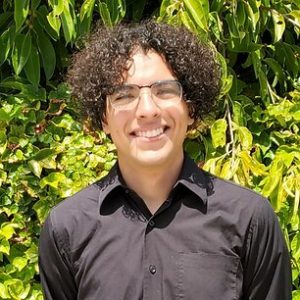
Room 120, Poster #8
University of California, Santa Barbara
Mentors:
Zachary Finkel, Li Cai, Ph.D.
Department of Biomedical Engineering
Rutgers, The State University of New JerseyGene therapy for chronic spinal cord injury
Currently, no effective treatments exist for spinal cord injury (SCI) due a complex microenvironment that prevents complete regeneration in the adult central nervous system. The Li Cai lab at Rutgers University has shown positive results using lentivirus-mediated Gsx1 gene therapy treatment in the hemisection SCI mouse model. The Gsx1 gene is responsible for the generation of dorsal inhibitory and excitatory interneuron populations from embryonic neural stem and progenitor cells (NSPCs) during development of the spinal cord. In the adult, glial cells undergo reactive gliosis after SCI and proliferate into a chemical and physical barrier known as the glial scar. Reactivating Gsx1 gene expression in damaged tissue will generate NSPCs that differentiate into functional tissue. In this study, a clinically relevant contusion SCI rat model was used to examine the effect of adeno-associated virus (AAV) and lentivirus-mediated Gsx1 gene delivery on glial scar border formation at the chronic injury stage. Our findings indicate that AAV- mediated Gsx1 gene therapy reduces reactive gliosis and chondroitin sulfate proteoglycan secretion in the glial scar in chronic SCI. Thus, our Gsx1 gene therapy in a contusion SCI rat model validates the potential for clinical treatment and advances the current understanding of the molecular mechanisms of NSPC activation and reactive gliosis in the adult injured spinal cord. Support was provided by a grant from the National Science Foundation NSF-EEC-1950509, REU Site in Cellular Bioengineering: From Biomaterials to Stem Cells; grants from New Jersey Commission on Spinal Cord Research (15IRG006 and 22FEL016); and the Rutgers TechAdvance Fund.
Biography: Juan Gutierrez is a rising senior at the University of California, Santa Barbara pursuing a bachelors in chemical engineering. At UC Santa Barbara, he works under Dr. Omar Saleh to research self-assembling DNA systems and biopolymer physics. Outside of the lab, Juan is an active member on the officer board and Panama project team for his university’s Engineers Without Borders chapter. This summer, he joined Dr. Li Cai’s lab in the Biomedical Engineering building as a part of Rutgers University’s Cellular Bioengineering REU. His project involved using rat models to research a potential gene therapy treatment for spinal cord injury. Juan plans to start a Ph. D program in Bioengineering starting in Fall 2023.
-
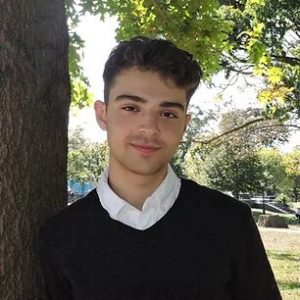
Room 120, Poster #9
CUNY Brooklyn College
Mentors:
Mr. Mark Hachicho, Priyanka Sharma, Ph.D., Harini Sampath, Ph.D.,
Department of Nutritional Sciences and Rutgers Center for Lipid Research
Rutgers UniversityLipogenesis is a metabolic process of fat formation which results from glycerol and free fatty acids (FFAs). The lipogenic enzyme Stearoyl-CoA desaturase (SCD), also referred to by respective coding genes, Scd1 and Scd2, converts saturated fatty acids into monounsaturated fatty acids (MUFAs), a major component of lipids in tissue. SCD is significantly expressed in response to a high-carbohydrate and high saturated fat diet. High expression of Scd1 has been shown to play a role in the development of various metabolic diseases such as diabetes, obesity, and non-alcoholic fatty liver disease, while low expression can be protective. It is proposed that SCD1 has the potential to become a pharmaceutical target, however it is important to delineate the effects elicited between systemic and organic specific SCD1 inhibition. The goal of this project is to understand the dietary regulation and gene expression of Scd1 and Scd2 along the length of the small intestine and colon. We quantify the expression of genes using wildtype mice with various feeding patterns and by measuring the levels of cDNA utilizing quantitative polymerase chain reaction (qPCR) technology.
Biography: Mark Hachicho is an undergraduate student at Brooklyn College majoring in Health and Nutrition Sciences, on track for the didactic program in dietetics. Currently, he is completing his final year as part of the MARC-NIH funded program. His interests include food systems and health policy, integrative nutrition, and nutritional immunology. Part time, he works as a Public Health Ambassador at his home institution serving as a bridge between campus sustainability and community education. His experience in biomedical research expands his application as an aspiring graduate student and is open to a diverse field of opportunities.
-

Room 120, Poster #10
William Paterson University of New Jersey
Mentors:
Vikas Nanda Ph.D., kenneth McGuinness , and Jan Siess
Center for Advanced Biotechnology & Medicine, Department of Chemistry and Chemical Biology, Rutgers The State University of New Jersey
The dynamics of electron transfer: applications of data science to biochemical processes
Electron transfer is at the forefront of chemical pathways that are integral for all kinds of transformations varying from complex catalysts to biological systems such as enzymatic proteins. However, determining the redox state of large biomolecules by means of experimental tools presents an array of challenges due to conditions such as ionic strength, pKa, pH, and metal coordination that limit the possibility to obtain a proper numerical value. As a means to help eradicate some of these barriers, computational chemistry has emerged as an approach to complement experimental methods by validating the accuracy of results or predicting the features we try to observe experimentally using software tools to perform calculations that rely upon quantum mechanical principles.Yet over the last few years, these methods have encountered a few limitations such as retrospective results, high cost of computational tools, and long ranges of time to perform the desired calcualtions. As a result, we propose a much more effective approach to analyze these systems by building an ML model that will assert whether the experimental data is meaningful or useful enough in order to compliment computational predictions. Our methodology relies on the evaluation of data using two types of clustering algorithms; DB-scan and Hierachical, these two approaches will manipulate the input data using two different routes to essentially regenerate outputs that are descriptive of the experimentally measured paremeters.
Biography:
Alexander Hidalgo, is a rising senior at William Paterson University of New Jersey pursuing his Bachelor’s of Science in Medicinal Biochemistry with expected graduation in spring 2023. While at William Paterson he has been trained professionally and academically for a future career in the chemical sciences. Since freshmen year he has been conducting synthetic organic research under the mentorship of Dr. Yalan Xing and most recently computational chemistry under guidance of Dr. Jay Foley. His contribution to various projects such as; The total synthesis of anti-bacterial natural product actinopolymorphol B, Asymmetric alkynylation for the construction of C-C bonds via photoredox catalysis, and Flluorine assisted cyclization of indole derivatives led him to develop an interest for research in catalysis, orgametallic chemistry, and resolving issues related to energy conversion or storage. After participation in the RISE/INSPIRE program, he will return home to start his application process for graduate admissions to Fall 2023 in order to pursue his Ph.D. studies in the areas mentioned previously.
-
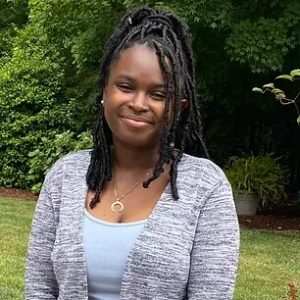
Room 120, Poster #11
University of Maryland Baltimore County
Mentors:
Dr. Robin Leichenko, Maravilla Clemens, Katie Cann, Dr. Majorie Kaplan, Dr. Jeanne Herb – Rutgers University – New Brunswick
Dr. Malgosia Madajewicz, – Columbia University
Dr. William Solecki – Hunter College
The impact of disaster subcultures on business and community preparedness in coastal New Jersey
The impacts of climate change are becoming more evident in the environment and our society. Extreme weather events affect coastal communities more often, leading to social disruption within these areas. The businesses within these coastal communities are extremely vulnerable to disasters and shocks. This study will contribute to the gap in the literature on disaster subcultures and climate resilience for small businesses and communities. The methods for the study entailed qualitative analysis of interviews conducted with small businesses and related stakeholders collected during spring of 2022. The study confirms that small and medium businesses are an informative unit of analysis that helps identify past disaster subcultures and reveals that disaster subcultures have an influence on current business mitigation and preparedness practices and community recovery. Future research directions may include the relationship between climate gentrification and displacement on disaster subculture.
Biography: Nyla Howell, originally from Prince George’s County, Maryland, is a rising junior at the University of Maryland, Baltimore County (UMBC). She is double majoring in Geographic and Environmental studies and Sociology. Thus far, Nyla worked at Prince George’s County Office of Emergency Management and currently manages UMBC’s Retriever Essentials’ Food Pantry. As part of the RISE program, Nyla worked with Dr. Robin Leichenko and NOAA’s Consortium for Climate Risk in the Urban Northeast research team at Rutgers University, Columbia University, and Hunter College. Her project focuses on disaster subcultures in coastal New Jersey and their influence on small and medium business preparedness strategies and community recovery. In the future, Nyla hopes to attend graduate school and work with underserved populations to promote equitable disaster preparedness and resilience.
-

Room 120, Poster #12
Carnegie Mellon University
Mentors:
Ann Kang
Carnegie Mellon UniversityWeida Wu
Condensed Matter Experiment, Rutgers UniversityZengle Huang
Condensed Matter Experiment, Rutgers UniversitySTM investigation of surface reconstruction of FeSn
Topological materials are a class of materials exhibiting exotic electronic properties with potential applications in higher efficiency electronics, quantum computing, and spintronics.
Recently materials with kagome lattices, a two dimensional star shaped pattern, have been shown to theoretically host topological properties; however, there is a lack of understanding of how the surface reconstructs in kagome lattice materials. In this project, we study the surface reconstruction of FeSn, a material consisting of alternating layers of Fe3Sn, which consists of kagome lattice structure, and stanene, a 2-D honeycomb of tin atoms. We heat a sample of FeSn up to different temperatures and then scan the Fe3Sn kagome lattice surface at 4.5K using scanning tunneling microscopy (STM) to study how the surface structure changes. Our results can be used to explain how the surface structure affects the topological properties of materials and examine how temperature affects surface reconstruction and defect density in materials.
Biography: Ann Kang is a rising senior at Carnegie Mellon University majoring in physics with a minor in computer science. She is currently in the 2022 Physics REU program at Rutgers conducting scanning tunneling microscopy experiments on surface reconstruction of FeSn under Professor Weida Wu in the condensed matter department. Ann also has pursued other interests in computer science, quantum computing, and biophysics in the past; she conducts research on entanglement distillation at the University of Pittsburgh during the school semester and has had experience researching antimicrobial peptides at Carnegie Mellon University in her sophomore year. Ann ultimately hopes to enter a PhD program after graduation to continue studying condensed matter physics.
-

Room 120, Poster #13
University of Connecticut
Mentors:
Advised by Noemie Denis and Dr. Richard RimanCreating environmentally friendly cement
The concrete industry accounts for 8% of all anthropogenic carbon dioxide emissions. The Riman Lab Group has identified a CO2-absorbing mineral, CaSiO3, with the potential to be used as a replacement for Portland Cement and significantly reduce the concrete industry’s burden on the environment. The goal of my work specifically is to determine the effect water content has on the mechanical and CO2-absorbing properties of this new cement material. Cement samples with varying concentrations of water and Darvan (a surfactant that helps lower the viscosity of ceramic suspensions) were created by casting in silicone molds on a vibrating table. Samples were then cured in a heated chamber pressurized with CO2. After curing, the density of each sample was calculated using measurements taken with calipers and a scale. The compressive strength of each sample was then determined with an Instron machine. Finally, fragments leftover from compression testing were powderized and reacted with acid to release and measure absorbed CO2. It was found that the behavior of cement samples was extremely sensitive to the water content at the start of the curing process. A change in water content by just a few percent can change the compressive strength by a factor of 3 or more. In conclusion, with careful control of its water content, CaSiO3 can form a strong, robust, carbon negative cement that may be able to replace Portland cement in the future.
Biography: I am from Barkhamsted Connecticut, a small woodsy town in the northwest corner of the state. My family grows vegetables and owns four chickens. I am a Materials Science and Engineering major at the University of Connecticut. My favorite hobby is running and I serve as President of Uconn’s competitive running club.
-

Room 120, Poster #14
Ramapo College of New Jersey
Mentors:
Mark Dresel, Spencer Knapp, PhD
Synthesis of novel antimalarial compounds
Medicines with novel mechanisms of action are needed to address drug resistance in malaria-causing Plasmodium sp. Prior studies in Plasmodium infected human blood have shown that tetrahydrobenzonaphthyridine carboxamides (TBNs) effectively inhibit drug resistant P. falciparum. In the present work, structure activity relationship (SAR) and structure property relationship (SPR) analysis has been conducted on the TBN core to guide the creation of analogues with improved potency and drug-likeness properties. Throughout this program, analogues have been synthesized and their efficacy verified via bioassay, with the current focus on finding analogues with improved solubility properties. In particular, analogues will be prepared by incorporation of polar substituents at a specific site on the TBN scaffold. New analogues are expected to show enhanced water solubility, a requirement for an oral medication, as well as satisfactory safety and metabolic stability properties appropriate for a new malaria treatment.
Biography: Jacob Knight is a rising senior at Ramapo College of New Jersey majoring in chemistry. He has interests in drug synthesis and chemical biology. He aspires to earn a PhD in chemical biology.
-

Room 120, Poster #15
St. Mary’s University
Mentors:
Troy A. Roepke, Ph.D.
Samantha Adams, Shabree Anthony, Lauren Aleksunes, Ph.D., Troy A. Roepke, Ph.D.
Joint Graduate Program in Toxicology
Rutgers University, Piscataway, NJ.Ali Yasrebi, Troy A. Roepke, Ph.D.
Department of Animal Sciences
SEBS, Rutgers University, New Brunswick, NJThe Impact of Maternal Diet on Flame Retardant Related Gene Expression in Neonatal Mice
The prevalence of the obesity epidemic and the ubiquity of endocrine disrupting chemicals (EDC) produces a unique problem for pregnant individuals. This is because interactions of maternal obesity and EDC exposure on developmental programming in the offspring, at the hypothalamic level, may lead to obesity and other metabolic disorders. The specific aim of this project is to determine the effects of maternal obesity on the neonatal expression of Blood Brain Barrier (BBB) genes following organophosphate flame retardants (OPFR) exposure. We conducted our experiment by feeding 10 WT females a low-fat diet (10% fat, LFD) and 10 WT females a high-fat diet (45% fat, HFD) for 8 weeks prior to mating. Once mating occurred all females were dosed with OPFRs from GD7 to PND14. At PND0 and PND14, the mediobasal hypothalamus from 1 female and 1 male pup from each litter were collected for analysis of gene expression. RNA was extracted and samples were prepared for quantitative real-time PCR. Our results suggest that genes associated with the BBB were not affected by maternal diet in the PND0 and PND14 cohorts. However, expression of CLDN1 and OCLN were different between the sexes at PND14. Other genes involved in reproduction and energy balance were altered by maternal HFD in the neonates and juveniles. Ongoing studies are characterizing the permeability of the BBB in littermates and characterizing the metabolic and behavioral effects in adult littermates. These results help us understand how maternal obesity interacts with OPFR exposure on the development of fetus and neonatal brains. Future direction will examine the hypothalamic and hepatic transcriptome in offspring from lean and obese dams with or without OPFR exposure.
Biography: Zak is earning his B.A. in biology at St. Mary’s University in San Antonio, TX, and will graduate in May 2023. He is currently working with Dr. Jillian Pierucci’s lab at St. Mary’s University, working within developmental psychology, focusing on mental disabilities. His research is supported by the NIH grant under his appointment as a MARC U*STAR trainee. He is also a part of the St. Mary’s Honors Program, Residence Life Staff, Honors Living Learning Community as a Community Coordinator, a member of the American Society for Investigative Pathology, and the Society of Toxicology. In the summer of 2021, Zak conducted research at the University of Texas at Austin as part of the American Society of Investigative Pathology Summer Research Opportunity Program in Pathology. While at UT in Dr. DeMorrow’s lab, Zak’s work revolved around chronic liver failure and hepatic encephalopathy induce a senescent-like phenotype in neurons. Currently, in the Summer of 2022, Zak is conducting research in Dr. Troy A. Ropeke’s lab as part of the Summer Undergraduate Research Fellowship through the Ernest Mario School of Pharmacy. In Dr. Roepke’s Lab, Zak’s work revolves around the impact of maternal diet on organophosphate flame retardant gene-related expression in neonatal mice. He is aspiring to get a Ph.D. in Pharmacology and Toxicology, contribute to research that will help to expand the knowledge of mental disabilities, and work at the National Institute of Mental Health.
-

Room 120, Poster #16
Franklin and Marshall College
Mentors:
Charles Keeton, Ph.D.
Dilys Ruan
Department of Physics and Astronomy
Rutgers, The State University of New JerseyExamining bias in models of gravitational lenses with galaxies from the IllustrisTNG simulation
The Hubble constant (H0) describes the current rate of expansion of the universe. Local measurements of H0 (from Cepheid variable stars or type Ia supernovae) disagree significantly with measurements made from the distant cosmic microwave background. This tension could point to serious systematic errors, or even issues with the ΛCDM model, so it is crucial to explore new ways of measuring the Hubble constant, as well as to search for sources of bias and error in existing methods. Gravitational lensing occurs when light from distant sources is deflected, distorted, and magnified by massive objects in the foreground. In the case of strong lensing, we observe multiple images of the same source. If a source’s brightness varies over time, as with a quasar, then we can observe a time delay between the variation in the images, as the light rays producing them travel different path lengths. Time delays tell us about distances of ray paths, and thus can be used to constrain our models of the system, including the value of the Hubble constant. When modeling systems where the lens is a galaxy, it is common to approximate the mass distribution of the lens using an elliptical power law. While it is possible to reproduce image configurations like this, the models are not necessarily accurate, and introduce bias on our measurements of H0. We have developed a model of lensing by a realistic mass distribution with particle data from a large elliptical galaxy in the IllustrisTNG simulation. The simulation assumes a particular value of H0. We will model this mock lens with an elliptical power law, and determine what bias on H0 is introduced by this approximation.
Biography: Io Kovach is a rising senior double majoring in astrophysics and mathematics at Franklin and Marshall College in Lancaster, Pennsylvania. Last summer, Io did research with Professor Elizabeth Praton at F&M, developing software for examining structure and motion within galaxy clusters. They have also done research at F&M with Professor Ryan Trainor, modeling point spread functions to describe the blurring of light from distant galaxies. This summer, they are working with Professor Charles Keeton, trying to understand sources of bias in commonly used models of gravitational lensing as a means to measure the Hubble constant. After college, they plan to pursue a Ph.D in Cosmology. They are the president of WFNM, F&M’s College Radio station. In their free time, Io enjoys drawing and playing guitar.
-

Room 120, Poster #17
Trine University
Mentors:
Joseph Freeman, Ph.D & Rick Cohen, Ph.D
Department of Biomedical Engineering
Rutgers, The State University of New JerseyGenerating PD-L1 expressing stem cells for immunoprotection in regenerative medicine
According to the United Network for Organ Sharing, UNOS, over 106,000 Americans are currently waiting to receive an organ transplant. Through many years of research it has been found that major histocompatibility complexes (MHC) have a major impact on determining whether the immune system rejects or accepts a piece of transplanted tissue, but chronic immunosuppression is still required for long term acceptance. To overcome this limitation, we worked to devise a system to make transplanted cells safe from immune cell proliferation and attack by utilizing a mechanism, successfully employed by cancer, to overexpress membrane protein programmed death ligand-1 (PD-L1) in stem cells. Binding between PD-L1 and its matching receptor programmed cell death protein-1 (PD-1) on the surface of immune cells impairs immune activity leading to cytokine production, decreased T lymphocyte proliferation, cytolytic activity, and suppression of the immune system. This approach has found that using a lentivirus packaged with the PD-L1 gene to transfect mesenchymal stem cells leads to expression of the desired protein. Cell line isolation is currently underway via selecting agents to eliminate any non-transfected cells within culture. These immune protected stem cells can hopefully one day be utilized to treat donor tissue and organs to bypass the need for a MHC match to be found, thus leading to more accessible and long term transplants. Support was provided by a grant from the New Jersey Health Foundation and National Science Foundation NSF-EEC-1950509, REU Site in Cellular Bioengineering: From Biomaterials to Stem Cells.
Biography: Shea Kreinbrink is a rising senior at Trine University in Angola, Indiana originally hailing from Northwest Ohio. Shea is majoring in Biomedical Engineering with a focus on research, enjoying any chance she gets to work in the lab. This summer, she performed research under the guidance of her Principal Investigator, Dr. Freeman, and mentor Dr. Cohen on utilizing the PD-L1 mechanism, primarily employed by cancer, to provide protection from the immune system for target cells. The next step in Shea’s academic career is to pursue a Ph.D in Biomedical Engineering with a continued focus on regenerative medicine. She would like to thank RISE for their support this summer and allowing the opportunity to further advance their skills as a researcher.
-

Room 120, Poster #18
Simmons University
Mentors:
Qianhui Qin, Dr. Ashutosh Goel
Department of Materials Science and Engineering
Rutgers UniversityComposition-structure-solubility relationships of pyrophosphate-based glasses
Biodegradable phosphate-based glasses have gained a large research interest due to their potential use in a wide range of soft tissue engineering applications such as cardiac tissue regeneration and photochemical tissue bonding. However, their further development has been impeded by the yet-limited understanding of the complex composition-structure-solubility relationship in these glass systems. Accordingly, the present work focuses on understanding the impacts of varying alkali on the glass formability, structure, and solubility of potentially biodegradable pyrophosphate glasses designed with the composition (55-x) R2O – x (L¬2O) – 45 P2O5 (mol.%), where x = 0, 13.75, 27.5, 41.25, 55 and R/L = Na/K, Li/K, Na/Cs and Li/Cs. The alkali pairs have been chosen based on their difference in size and ionic field strength. Employing a suite of characterization techniques including DSC, XRD, and FTIR, the thermal and structural descriptors as well as the phase information of the as-synthesized samples have been investigated.
Mixed-alkali compositions including Na+K and Li+K have been melt-quenched, and their amorphous or crystalline structure has been confirmed using powder X-ray diffraction. Preliminary results from powder X-ray diffraction reveal that while single alkali 55Na2O-45P2O5 glass compositions can form a transparent glass, mixed alkali compositions narrow the glass forming region. This extent of glass forming region depends on the difference in the ionic size and the ionic field strength of the two alkali ions.Biography: Sarina Lau is a rising junior in the honors college at Simmons University majoring in Biochemistry and minoring in Physics. She plans to pursue continued research in biomaterials and tissue engineering while continuing a combined dual-degree program in Biomedical Engineering at Columbia University after her third year at Simmons, with future intent to apply to medical school after her undergraduate career. Aside from her developing interest in biomaterials research, she spent the last semester as a research student in an organic synthesis laboratory where she synthesized and characterized a green copolymer with potential anti-viral properties for surface coating applications. Outside of academics, Sarina enjoys mentoring other undergraduate students as a teaching assistant, mentoring elementary school girls in the Boston area, playing the piano, and crocheting.
-


Room 120, Poster #19
University of Connecticut
Mentors:
Swathi V. Reddy, Ivan Susin Pires, Quintin O’ Boyle, Andre F. Palmer, Francois Berthiaume, PhD, and Suneel Kumar, PhD
Department of Biomedical Engineering
Rutgers, The State University of New JerseyHealing burn injuries and preventing conversion using an iron-scavenging protein cocktail
Approximately 500,000 burn injuries are medically treated in the USA each year, with the highest incidences of fire burns and scalds in children and young adults. Burn injuries trigger significant hemolysis releasing toxic extracellular hemoglobin (Hb), heme, and free iron, which in turn, exacerbate burn wound inflammation, thus resulting in an expansion of the burn wound both in area and depth. While the toxicity is naturally mitigated by the upregulation of scavenger proteins haptoglobin (Hp), hemopexin (Hpx), and transferrin (Tf), this response takes several hours to peak, and in cases of larger burns, the proteins produced are insufficient. We hypothesize that by supplementing the body’s local supply of these protective proteins, burn wound expansion can be prevented, thereby promoting faster wound healing. To test the efficacy of a scavenger protein cocktail (mixture of Hp, Hpx, and Tf), an in vitro burn injury model was created using hydrogen peroxide (H₂O₂; 1-1000 mM). We then tested different doses of the iron-scavenging protein cocktail on the metabolic activity (AlamarBlue) of fibroblasts with or without treatment. H₂O₂ at 1000 mM for 24 h significantly reduced cell metabolic activity, while treatment with the iron-scavenging protein cocktail restored the metabolic activity in a dose-dependent manner. Future work involves developing a direct thermal injury in vitro model as well as exploring the therapeutic time window in vitro to help design future in vivo studies. This work was supported by grants from the Department of Defense (MB190134) and the National Science Foundation (NSF-EEC-1950509), REU Site in Cellular Bioengineering: From Biomaterials to Stem Cells.
Biography: Janelle Lugo is from Waterbury, Connecticut and is a rising Junior at the University of Connecticut where she is pursuing a degree in Biomedical Engineering with a concentration in Biomaterials and Tissue Engineering. She is currently the president of the Society of Hispanic Professional Engineers UConn Chapter. This summer, she was part of the Cellular Bioengineering REU where she worked under the guidance of Dr. Francois Berthiaume and Dr. Suneel Kumar. She studied the healing of burn injuries and preventing wound conversion using an iron-scavenging protein cocktail. Janelle plans to pursue a Masters in Biomedical Engineering upon graduation.
-

Room 120, Poster #20
University of Puerto Rico Mayagüez Campus
Mentors:
Kimberly Cook-Chennault, PhD.
Associate Professor
Mechanical and Aerospace Engineering Department
Rutgers, the State University of New JerseySharmad A Anaokar
Mechanical & Aerospace Engineering
Rutgers, the State University of New JerseyHydrogels are smart materials that have garnered a lot of attention over the last several decades due to their application to a variety of industries, e.g., tissue engineering, agriculture, drug delivery, and contact lenses. Hydrogels are used because of their shape memory, stimuli response, hydrophilic properties, water absorption capacity, ability to store energy when subjected to mechanical loads, and tunability as a function of crosslinking. Hydrogels have been extensively studied however, there is a lack of literature on the fundamental mechanical behavior of these materials when subjected to high strain rate shear and compression loading conditions. Therefore, this project focuses on HEMA (2-hydroxyethyl methacrylate) – based hydrogels that have been ubiquitously studied under low to moderate loading conditions, but not high strain-rate conditions. The HEMA-based hydrogels examined in this study were crosslinked using a UV cure process (~20 mW/cm2, 110 seconds) and subjected to compression loading over strain rates ranging 0.05-1.0 mm/mi at 1 Hz. The mechanical storage modulus, loss modulus, and compressive yield modulus were observed as a function of strain rate, which has not been studied previously. The fundamental material characterization data obtained from this study facilitates the exploration and realization of advanced applications for this category of hydrogels.
Biography: Alejandra Marie Medina Vázquez was born on December 18, 2001, in Ponce, Puerto Rico. She attends the University of Puerto Rico at Mayagüez Campus and is presently majoring in Chemical Engineering with a minor in Pharmaceutical Engineering. She is about to start her 4th year of college to complete her 5-year bachelor’s degree. Alejandra was Vice-president in Human Resources at the organization AIESEC, which focuses on giving students the opportunity to travel to countries in need where they do projects to achieve world peace through the Sustainable Development Goals of the United Nations. Alejandra is also a member of the American Society for Engineering Education (ASEE) where she has been recognized as Member of the Month and Directive Member of the Month. Alejandra has also been recognized by ASEE for being a cheerful and active leader. Alejandra has also been on the Honor Roll of the Chemical Engineering department (2019-2022). Currently one of Alejandra’s biggest successes in her career is having the opportunity to work at the GET-UP research program from Rutgers University. Alejandra plans to continue her studies after her bachelor’s degree. She is still trying to figure out if she wants to pursue a PharmD or to work on research or genetic engineering.
-
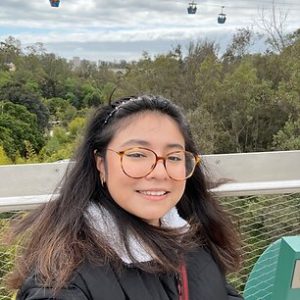
Room 122, Poster #1
University of California, Riverside
Mentors:
Xia Wen Ph.D. , Department of Pharmacology & Toxicology, Rutgers University, Piscataway, NJ
Lauren M. Aleksunes Pharm.D., Ph.D. , Department of Pharmacology & Toxicology, Rutgers University, Piscataway, NJ, Environmental and Occupational Health Sciences Institute, Rutgers University, Piscataway, NJ
A class of synthetic chemicals, perfluorinated and polyfluorinated substances (PFAS), have been used for decades in non-stick cookware, fire-fighting foams, textiles, packaging, and cosmetics. PFAS are found in almost the entire U.S population and elevated concentrations may contribute to the development of chronic conditions including hyperuricemia and hypercholesterolemia. Prior studies have demonstrated that PFAS can inhibit the functional activity of the intestinal uric acid transporter, breast cancer resistance protein (BCRP/ABCG2), which may explain a mechanism for increased risk of hyperuricemia. In the current study, we sought to determine whether PFAS chemicals alter expression of BCRP in human intestinal cells. Pharmacological agonists of the AhR (β-napthoflavone (β-NF) and PPARγ transcription factors (rosiglitazone, (RG) were used as positive controls that induce BCRP in human Caco-2 cells, a well-studied model of the intestinal barrier. Caco-2 cells were treated with vehicle (0.5% DMSO), various PFAS chemicals (10µM, 50µM), or β-NF/RG (25µM, 100µM) for 72 hours. No cytotoxicity was observed at these concentrations. BCRP expression was semi-quantified using SDS-PAGE and Western blot analysis. As expected, β-NF and RG induced BCRP expression. By comparison, at concentrations of 10µM, PFAS chemicals did not significantly change BCRP expression. Ongoing studies with PFAS treatments at 50µM are being conducted to determine whether PFAS is able to change BCRP expression at higher concentrations. These studies will advance understanding of the interplay of PFAS and BCRP and the risk of developing hyperuricemia in individuals exposed to PFAS. This work was supported by the Society of Toxicology (SOT), NIH grants R25ES020721 and R01ES029275, and MARC U T34GM062756.
Biography: Ruth Meletz is a rising fourth-year Environmental Science student and MARC U STAR trainee studying at the University of California, Riverside. Public Health and Environmental Toxicology are her research areas of interest and her current research at RiSE focuses on how PFAS chemicals affect BCRP expression. This work may shed light on the risk of developing hyperuricemia in individuals exposed to PFAS. Her future plans include pursuing a Ph.D. in Environmental Toxicology or Environmental Health and continuing research on pollution sources’ impact on communities.
-
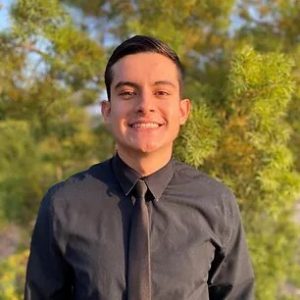
Room 122, Poster #2
California State University, Fullerton
Mentors:
Dr. Jessica Hamilton
Parental Rules In Adolescent Social Media Use and Mental Health
High durations of social media use have been associated with negative mental health outcomes among adolescents. Little research has focused on the relationship that specific behaviors of social media, such as frequency of checking and posting, might have with depression and anxiety. Further, parental rules and behaviors have been found to affect the relationship between social media and poor sleep. However, less is known about whether parent’s rules and behaviors around social media influence whether social media affects depression and anxiety in adolescents. The current study examined the association between social media use frequency and depression and anxiety and examined whether parental rules around technology affect this relationship. Looking at specific behaviors of teens can indicate if certain adolescents are more at risk or protected from the effects of social media, and looking at the parents’ rules around social media can assist in informing whether social media restrictions can promote healthy social media use and mental health outcomes for their children. We hypothesized that having a healthy balance, or medium amount, of rules on social media usage would correlate with the lowest rates of depression and anxiety in adolescents. On the other hand, a lack of rules or excessive number of rules circling social media usage could correlate with higher rates of depression and anxiety. We conducted a secondary data analysis and examined variables related to social media usage in adolescents, their emotional well-being, likelihood for depression and anxiety, their parental rules surrounding social media, and their parents’ experience with social media. Findings may guide future prevention and intervention programs designed to improve social media use and mental health.
Biography: Benjamin Mendoza is a rising senior majoring in Psychology and Human Services at California State University, Fullerton (CSUF). During his time at CSUF, Benjamin has been on the Dean’s Honor List every semester and has spent a majority of his time giving back to the community. When not researching, Benjamin spends his time working with students through different populations at the Diversity and Inclusion Resource Center or at the Housing and Residential Engagement Department. Benjamin plans on applying to Clinical Psychology Ph.D. programs this upcoming fall.
-
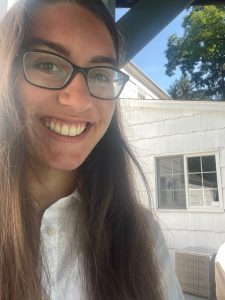
Room 122, Poster #3
Stevens Institute of Technology
Mentors:
Ron Gilman and Win Lin
Department of Physics and Astronomy
Rutgers, The State University of New JerseyWalk corrections for the beam monitor of the MUSE experiment
The MUon Scattering Experiment (MUSE) performs simultaneous muon and electron scattering off a liquid hydrogen target to measure the charge radius of the proton. MUSE seeks to address the proton radius puzzle, namely, the discrepancy between radius measurements of the proton when using muonic hydrogen as compared to electronic hydrogen. The goal is to allow direct comparison between muon and electron scattering, while making high precision measurements. By analyzing cross-section measurements, the experiment will make conclusions about the proton radius and provide a test of lepton universality. It will also address the possibility of two-photon exchange by using both beam polarities. In this poster, I seek to understand and observe the trend in the walk effect of the experiment’s beam monitor, to improve the precision of timing data from the silicon photomultipliers (SiPMs).
Biography: Sophia Miskiewicz is a New Jersey native and rising senior at Stevens Institute of Technology in Hoboken, NJ. She is majoring in Physics with a minor in Music & Technology. Post-graduation, Sophia hopes to pursue a PhD in physics. Outside of academics, she enjoys spending time with her family and friends, listening to and playing music, beekeeping, and serving as the president of Stevens Christian Fellowship. She is very grateful for the opportunity to have worked with Prof. Gilman, Win Lin, and the MUSE group as part of the Physics & Astronomy REU.
-
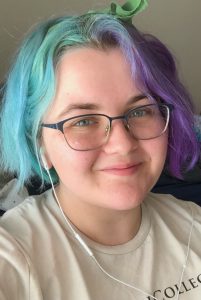
Room 122, Poster #4
Smith College
Mentors:
Elizabeth Morningstar
Department of Physics
Smith CollegeTsung-Chi Wu, Jak Chakhalian, Mikhail Kareev
Department of Physics and Astronomy
Rutgers, The State University of New JerseyLow temperature electrical property of a thin film quantum material
Quantum materials are materials that show new electronics properties that cannot be described by classical physics but by quantum physics. By tuning the interaction in a quantum material, different quantum phases can be achieved. Eu2Ir2O7(EIO) has a particularly interesting phase diagram when the interaction is varied. However, the experimental techniques that can simultanesouly tune the interaction and detect the quantum phases are rare. Here, we investigate how to tune the interaction as well as how to detect these new phases by low-temperature electrical experiments. In order to realize these ideas, we have built a low-temperature cryostat that allows an electrical property measurement for temperatures down to 77 K and a python interface that detects the real-time data of the measurement. EIO unveiled an interesting metal-insulator transition as the temperature dropped from room temperature to 77 K. Our results demonstrated that we are capable of tuning the interaction of a quantum material by changing temperatures and determining the different quantum phases by electrical measurements.
Biography: Elizabeth Morningstar is a rising senior at Smith College studying physics and mathematics. Her interests are in using and improving upon computational methods in order to explore condensed matter. This summer she joined Dr. Chakhalian’s laboratory for artificial quantum materials to create an interface for investigating metal-insulator transitions. After she graduates in spring of 2023, Elizabeth intends to pursue graduate study in condensed matter physics.
-
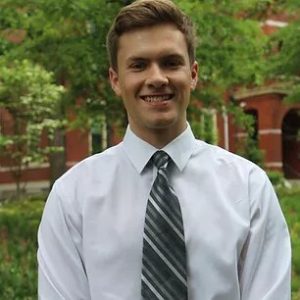
Room 122, Poster #5
Georgia Institute of Technology
Mentors:
Dr. Klein – PI
Sol-gel process and application of melting gel to metabolic sensors for smart connected health
A non-invasive biosensor is designed to measure skin-released gases such as acetone to reflect the general health of a person who is wearing the sensor. The sensor is made of polyaniline and cellulose acetate films that can react to acetone leaving the body, but the sensor requires isolation from ambient gasses. A sol-gel processed silicate glass or ‘melting gel’ is a possible barrier as it can act as a sealant on the films. Cured melting gel on the film prevents interference from ambient air and allows sensing of the skin gasses. Melting gel is warmed and spread on top of the film and heated to cure to make a single coating. Samples contain 3 to 4 coats of gel, where each is heated for 60 minutes to become rigid. They are then consolidated at 160°C and 200°C for one hour each to set the gel. The package of the gel-coated film needs to conform to body movements such as bending or stretching, be comfortable and hermetic. Analysis of samples consisted of Brunauer-Emmett-Teller (BET) testing to measure surface area, and nanoindentation to find the elastic modulus and hardness. Film and gel packages made by this method yield a low surface area of 2.21 m2/g, a reduced elastic modulus of 2.05 GPa, and a Young’s Modulus of 2.5 GPa. Consistently making strong and smooth gel-coated films is the starting point to developing quick and reliable health sensors that can be applied topically.
Biography: Michael O’Donnell is a 5th-year student on track to complete a B.S. in Materials Science at Georgia Tech in the Fall of 2022. During this time, he has been a part of the school’s rowing team, a member of a research team, and an avid explorer of the city of Atlanta. Having spent his life in Georgia, the ability to take part in Rutgers’ advanced materials REU program has been a greater experience than more time in a lab setting. Working on a project in a new field and seeing the Northeast yields more options for his future choices. After graduating, he plans to start a Ph.D. in Materials Science on either biomaterials, ceramics, or alternative energy.
-

Room 122, Poster #6
Rutgers New Brunswick
Mentors:
Dr. Kimberly Cook-Chennault, Ph.D.
Engineering department
Associate professor at Rutgers, the state University of New JerseyUsing multimodal approaches to understand the attention and focus of students engaging in engineering serious learning games
Online learning is becoming an increasingly dominating method for teaching complex subjects in both K-12 and undergraduate education. The use of physiological response in the exploration of human learning and behavior has also recently become an area of investigation as it has been shown to be an effective method of assessing student’s attention, memory, engagement, and cognition. Previous studies have focused on the development of methods for capturing and interpreting the physiological responses of people as they engage in serious games. However, few have validated their responses with other forms of quantitative and qualitative data. This study builds on previous studies of educational games, where it was found that women students expressed a higher distaste for the game than their male counterparts. However, full of understanding of what aspects of the game lead to these sentiments were inconclusive. Hence, a multimodal approach is used in this study that combines physiological, quantitative, and qualitative data to understand engineering undergraduate students’ perceptions of an engineering mechanics serious game. We hypothesize that the use of a multimodal approach for this study will further our understanding of all students’ perceptions of the engineering educational game. This study utilizes eye tracking, dermal sensing, interviews, and an assessment instrument to better understand these students’ perceptions. These findings from this study will advance the engineering education communities’ understanding of how they interpret and conduct multimodal studies, in addition to gaining a better understanding of how 21st century engineering students engage in engineering gaming technology.
Biography: Chelsea Susan Obade, a Summer 2022 Rise (NSF/REU) program associate, was born in Nairobi Kenya and is an undergraduate student going into her sophomore year and is pursuing her bachelor’s degree in the School of Engineering at Rutgers Newbrunswick. Ms. Obade’s personal academic achievements include; belonging to the National Honors Society in 2020 and 2021, being captain of her institution’s crew team in 2021, having received the Craig A. MacCallum Memorial Stem/Aviation Scholarship in 2021, as well as receiving the SWE (Society of Women Engineers) scholarship in 2021, an organization that offers women in engineering a unique place and voice, of which Chelsea is a proud member. Ms. Obade plans on pursuing a PhD following the completion of her undergraduate degree. She is still exploring her options in terms of the specialization within the engineering profession, with her choices being between industrial engineering and mechanical engineering.
-
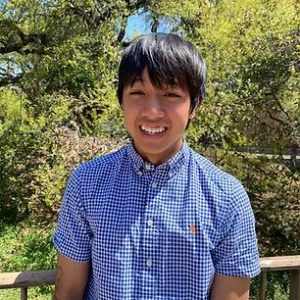
Room 122, Poster #7
The University of Texas at Austin
Mentors:
Caleb Frey and Dr. Ryan SillsModeling intergranular fracture in heterogeneous ceramics
Although ceramics have high thermal stability and low density, they have one fatal flaw: low fracture toughness. The central premise of this research is to explore the concept of using intergranular heterogeneity to optimize toughening in ceramics.
The models will be generated using Finite Element Analysis software utilizing the cohesive surface approach to model fracture. Moreover, the parameters of these grain boundaries will be modulated to yield the highest toughness. The simulation results will then be analyzed using image processing software to analyze the three basic formations of cracks: crack arrest, crack branching, and crack jumping.
Results are still ongoing, and no definite results have been obtained yet.
Biography: Orlan is a rising sophomore majoring in aerospace engineering at the University of Texas at Austin. He will be planning to research additive manufacturing or similar research interests at his institution. This summer of 2022, Orlan will work with Dr. Ryan Sills on “Modeling Intergranular Fracture in Heterogeneous Ceramics.” He enjoys creative writing, journaling, and guiding incoming students in his home institution.
-

Room 122, Poster #8
SUNY Albany
Mentors:
Dr. Meenakshi Dutt and Mason Hooten
Department of Chemical & Biochemical Engineering
Rutgers, The State University of New JerseyHow non-covalent interactions influence conformation of lipase
Lipase is a digestive enzyme that acts as a catalyst to hydrolyze triglycerides in food so they are properly absorbed. Lipase has various biotechnological applications including pharmaceutical production and “food and oil processing” (Kim, 1997). Protein conformation is the shape of the protein and it is important because the formation of the protein determines its function. If we cannot understand protein formation, we cannot influence protein function for treatment of diseases. Non-covalent interactions (NCIs) are important for maintaining protein conformation and stability. This research primarily focuses on electrostatic interactions by determining the distances between the charged particles that enable Lipase to maintain a conformation that allows it to execute its corresponding functions. This research will also investigate if changes in distance affects electrostatic interaction strength. The formula F= q1q2/d2Є is used to determine electrostatic interaction strength. F represents interaction strength, q is charge, d is distance, and Є is the dielectric constant of the solvent. Tools in the Protein Data Bank (PDB) are used to measure distances between residues in Lipase PDB structure 1OIL. The position of the residues are used to determine the distances of interest. The distances of interest are within the U1 domain which includes residues 130-166. This domain protects the active site and is responsible for catalytic activity. The GROMACS topology file generated using the CHARMM force field is used to determine residue charges. The results showed a diverse distribution of residues with positive, negative and in some cases no charge. All residue charges are between -1 and 1 Coulombs. Distance results showed a trend of numerous residues consisting of distances between 4.22 and 4.88 Angstroms. In future research, the dielectric constant will be determined and the formula will be used to determine if changes in distance affects electrostatic interaction strength.
Biography: Ebony Oenga is a class of 2022 graduate from the University at Albany majoring in Human Biology and minoring in Psychology. During her time at SUNY Albany, she was on the Dean’s List of Distinguishable Students and received the Spellman Academic Achievement Award each semester. While in school Ebony was a member of the National Congress of Black Women (NCBW) Community Service Committee, a private tutor, and a lifeguard/swimming instructor. She joined the Advanced Materials REU program in Summer 2022. She is currently applying to graduate and post-baccalaureate programs studying pre-health sciences. Outside of research and academics, Ebony enjoys reading mystery novels, cooking diverse cuisines, listening to music, and distance running.
-
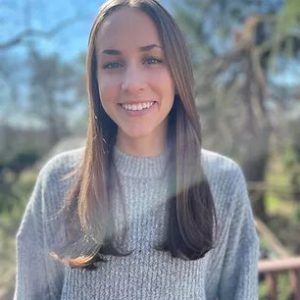
Room 122, Poster #9
The College of New Jersey
Mentors:
Elena Di Mare, Cesar Ramirez, Sakhi Shah, Dr. Adam J. Gormley
Department of Biomedical Engineering
Rutgers, The State University of New JerseyThermal stabilization of glucose oxidase for continuous glucose monitoring
Across the United States, millions of diabetic patients must regulate their glucose levels via glucose monitoring. This can be accomplished using a continuous glucose monitor (CGM), which contains a glucose sensing enzyme, glucose oxidase (GOx), that detects glucose levels within interstitial fluid of the dermis. CGMs must be replaced after 10-14 days, as GOx degradation negatively impacts the accuracy of glucose readings. Stabilization of this enzyme for a lengthened sensing lifetime would prevent frequent replacements of CGM. To stabilize GOx, previously identified copolymers can be mixed with GOx to create polymer-enzyme complexes (PEC). In this work, we investigate utilizing GOx-PECs for long-term stability at accelerated aging and physiological conditions. We developed a colorimetric assay to study the kinetics of the GOx and GOx-PEC. As a result, the assay quantified specific activity of GOx and GOx-PEC using UV-Vis spectroscopy to measure optical density at a wavelength of 653 nm. Performing accelerated aging screenings at 45ºC and 65ºC of GOx-PECs, using varied monomer compositions for each polymer, we identified promising polymer candidates for longer term studies at physiological conditions. Additionally, GOx and best performing GOx-PECs were heated at 37ºC for 6 days, and activity was measured every 24 hours to understand how enzymatic activity decayed under conditions similar to a CGM. Preliminary results demonstrate long-term retained enzymatic activity of GOx-PEC as compared to native GOx, potentially due to favorable surface interactions between the polymer and protein, thus showing promise in extending the lifetime of CGM via GOx with addition of a polymer. Future work aims to analyze GOx using dynamic light scattering to study whether the addition of stabilizing polymers aids in prevention of enzyme aggregation. Support was provided by a grant from the National Science Foundation DMREF-2118860 and NSF-EEC-1950509, REU Site in Cellular Bioengineering: From Biomaterials to Stem Cells.
Biography: Grace Palahnuk is from Clinton, New Jersey and is currently a biomedical engineering major at The College of New Jersey (TCNJ). She is the treasurer of the Iota Gamma chapter of Zeta Tau Alpha Fraternity, a member of the Biomedical Engineering Society chapter for the school, and a member of Omicron Delta Kappa Leadership Honor Society. Outside of the school, she enjoys running, going to the beach, and spending time with family and friends. During the summer, Grace was a member of the Cellular Bioengineering REU, and she focused on enzyme stabilization under the mentorship of Dr. Adam Gormley. She plans to pursue a Ph.D. in biomedical engineering after she graduates from TCNJ.
-

Room 122, Poster #10
Rochester Institute of Technology
Mentors:
Lisa Rodenburg, Ph.D., Robert Miskewitz, Ph.D
Department of Environmental Sciences
Rutgers University, New Brunswick, NJStaci L. Capozzi, Ph.D., Marta Venier, Ph.D.
Indiana University, Bloomington, INEvidence for the photolysis for brominated flame retardants during atmospheric transportation
The legacy flame retardants, polybrominated diphenyl ethers (PBDEs) is a persistent organic pollutant that continues to linger in the environment. Laboratory experiments have demonstrated that direct photolysis can remove bromines from PBDEs, resulting in fewer bromine PBDEs. These products of photolysis have higher vapor pressures and therefore are more easily transported via the atmosphere and more likely to bioaccumulate. The purpose of this work was to examine data on PBDE concentrations in the atmosphere as measured by the Integrated Atmospheric Deposition Network (IADN) for evidence of debromination via direct photolysis during atmospheric transport of PBDEs. The IADN includes both urban and rural monitoring sites in the Great Lakes region. We hypothesize PBDEs with more bromines decompose faster under clear sky conditions, which allows for significant expose to sunlight and photolysis. Data extracted from National Weather Service stations (The Integrated Surface Dataset (ISD) program) was coupled with IADN data and analyzed using stepwise regression with variables such as wind speed, Julian date, temperature, and sky condition (measured as oktas), to determine which factors are significant drivers of concentration and likely to be related to the direct photolytic debromination of PBDEs. Results from the most urban site shows that the length of the day is significantly and negatively correlated with the concentrations of PBDEs with five or more bromines, and the coefficients increase in magnitude as molecular weight increases. This suggests that these higher MW PBDEs may be undergoing photolysis, meanwhile PBDEs with fewer bromines were negatively correlated with sky condition. Thus, concentrations of photolysis products (low molecular weight PBDEs) decrease when conditions are cloudy, possibly due to products not being formed under cloudy conditions. More investigation is needed to understand the influence of wind direction, but initial results suggest that PBDEs undergo direct photolysis during transport in the Chicago area.
Biography: Luis Remache is a rising 4th year at the Rochester Institute of Technology (RIT) as an environmental science major. At RIT, Luis has been trained in field sampling techniques in soils and water, as well as having extensive experience with geographic information systems such as ESRI’s ArcGIS Pro. He has a keen interest in environmental issues and eager to create sustainable solutions for the future. RISE at Rutgers is his first summer research experience where he worked with Dr. Lisa Rodenburg and Dr. Stacci L. Capozzi in performing statistical analysis of the debromination of brominated flame retardants in the Great Lakes Region.
-
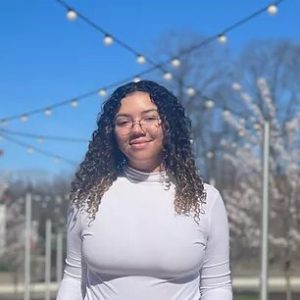
Room 122, Poster #11
Montclair State University
Mentors:
Kim McKim
Waksman Institute of Microbiology
Rutgers, The State University of New JerseyNew genes required for fertility in Drosophila Melanogaster
Meiosis is a form of cellular division where a diploid cell yields four genetically unique haploid gametes. Errors can occur during meiosis which can cause abnormal chromosome segregation known as nondisjunction. The presence of an incorrect number of chromosomes in gametes can cause health issues such as infertility or diseases like Down Syndrome and Turner’s Syndrome. Our previous research used RNA interference to knockdown specific genes and identify those associated with a meiosis related phenotype. In this project, previously studied RNAi genes linked to nondisjunction were selected for characterization. The main goal is to test the genes of interest to determine where the effects of meiosis occur using three different assays: TubGal4/UAS system, crossing over, and cytology. Utilizing the Gal4/UAS system allowed us to examine mitotic division in somatic cells, and of the genes tested, we found that genes, CG6951 and CG32344, showed evidence of lethality. This significant finding suggests errors specific to cell division. Furthermore, crossing over will be measured to determine if a reduction of recombination events directly causes nondisjunction. In cytology assays, the spindle and synaptonemal complex will be analyzed for defects in early or late meiosis, respectively. Through the characterization of the RNAi genes, a better understanding of meiotic errors leading to complications in fertility may be obtained.
Biography: Nicole Rodriguez Ortiz, born and raised in Elizabeth, NJ, is a rising junior at Montclair State University studying biochemistry and minoring in visual arts. She is a member of the Honors and Health Careers Programs. As an undergraduate, she has received consecutive Dean’s List and Presidential Scholar awards. Nicole also participates in the Association for Women in Science and the Louis Stokes Alliance for Minority Participation. She is grateful for the opportunity to have worked under the guidance of Dr. Kim McKim and Janet Jang in the Waksman Institute of Microbiology. After she graduates in the spring of 2024, Nicole intends to attend medical school and possibly pursue clinical research in obstetrics and gynecology.
-

Room 122, Poster #12
Inter American University of Puerto Rico, Aguadilla Campus
Mentors:
Malin Pinsky, PhD & Zoë Kitchel, PhD Candidate
Department of Ecology, Evolution, and Natural Resources
Rutgers UniversityVariations in morphological traits of the larval stage for a poleward moving marine species
Climate change affects marine ecosystems. As a result, fish in the ocean have shifted poleward through different locations looking for a suitable habitat condition. Atlantic croaker is economically important to commercial fisheries in the United States because its use as baitfish. The larval phase is crucial for understanding low location and temperature within fish is associated with morphological traits related to swimming speed. Larval morphology is key to understanding larval dispersal. The purpose of this research is to understand how temperature and location within a species range can be potential predictors of morphology. To explore these factors, measurements were taken to compare morphology from specimens from 1995 and 2017. Fish samples were collected weekly in Little Egg Inlet, New Jersey. Using a dissection microscope, fish measurements and photos were taken. The data were cleaned, and then statistical analysis was performed. Temperature and location within a species range were explored as potential predictors of morphological traits in fish from 1995 and 2017. We did not find a major difference between the fish from 1995 and 2017 which represent different locations within a species range. We found that some morphological traits varied with temperature. Specifically, both aspect ratio and square caudal peduncle depth factor increase with temperature, but no relationship was found between temperature and total length. Understanding the impact of location and temperature on the morphological traits of larval fish can help us build models to predict where Atlantic croaker will be in the future. For future research, DNA samples will be collected from specimens from 1995 to help us understand the genetic component of variations in morphological traits.
Biography: Jesenia Rosa Miranda is a first-generation college student at the Inter American University of Puerto Rico, Aguadilla Campus. She is a rising senior majoring in Microbiology and minoring in Premed. Jesenia has been part of different governing bodies of associations in her institutions, such as president and vice president of their SACNAS chapter. At her institution she has conducted research with her professor and mentor Dr. Elizabeth Padilla-Crespo. She works in the Biology and Microbiology laboratories as laboratory assistant. Last summer, she was accepted into a REU, where she conducted research in microbiology. This summer, Jesenia was chosen to be part of the RISE 2022 summer program to work in the Pinsky Lab under the guidance of Dr. Malin Pinsky and PhD Candidate Zoë Kitchel in the Department of Ecology, Evolution, and Natural Resources. After graduating, she intends to go to graduate school and expand her research experiences in microbiology.
-

Room 122, Poster #13
University of Nebraska-Lincoln
Mentors:
Sylvie Rangan, Robert A. Bartynski
Department of Physics and Astronomy, Laboratory for Surface Modification, Rutgers University
Development of a high-resolution inverse photoemission instrument
Inverse photoemission spectroscopy, probing unoccupied electronic states of materials, has been limited by the relatively low energy resolution (~400 meV) of current experimental systems. In this work, a novel experimental design, in an off-Rowland circle configuration, comprising a high-resolution electron source, a diffraction grating and a photon-sensitive 2D multichannel plate (MCP) detector, is developed.
Theoretical simulations of photons trajectories using the Oasys package, indicate that an energy resolution better than 40 meV should be achieved. Additionally, simulations indicate that such optical system is very sensitive to optical path lengths, such as sample-grating or grating-detector distances. Experimentally, an existing ultra-high vacuum system housing a low-resolution electron source, a diffraction grating and an old 2D-MCP, has been used to optimize the optical path. Due to limitations of the starting detector, the 2D-MCP has been replaced by a newer and more efficient one, prompting the design of a new detector mounting.
Biography: Alyssa Simpson is a senior Physics and Math major attending the University of Nebraska at Lincoln. She is conducting research under the tutelage of Professors Sylvie Rangan and Robert A. Bartynski in the Physics and Astronomy REU. She is the President of her school’s Society of Physics Students and a co-team lead in the Aerospace club there as well. She conducts research in the field of Condensed Matter Physics with projects focusing on flexible ferroelectric materials for nanotechnology usage. Her main research interests include ferroelectric perovskites, perovskite solar cells, and Van der Waals heterostructures. While her extracurricular interests center around music, dance, food, nature exploration and rock climbing. Regarding future plans, she is currently deciding between two career paths. One starts with getting her MS in Condensed Matter Physics and Physics Education, then going back to her home country of Jamaica to teach and get more students there interested in STEM research, after which she will pursue her PhD. The other involves going straight into a Condensed Matter Physics PhD program directly after gaining a Bachelor’s degree.
-

Room 122, Poster #14
Hendrix College
Mentors:
Denise A. Robles, Jeffrey D. Zahn
Department of Biomedical Engineering
Rutgers, The State University of New Jersey1 in 8 individuals in the world suffer from a mental disorder. Disorders like autism spectrum disorder (ASD) and schizophrenia have been characterized by deficits in short- and long-range connectivity in the brain. The brain is comprised of neuronal axons that bundle into cerebral tracts to deliver key signals for communication and information exchange. Cellular models of these pathways are valuable tools to study neurocircuitry in mental disorders for the development of treatment and therapeutic interventions since brain tissue is hard to access. Existing model are primarily in 2D forms, therefore, there is a need for 3D models to better mimic the architecture of the brain. The Zahn lab has created a 3D Brain-on-a-Chip model to study neuronal signaling. It is composed of a Cerebral Organoid Connectivity Apparatus (COCA) with a microelectrode array (MEA) previously developed in our lab to detect signals sent and received by the neuronal axons. In this project, we wish to improve upon the signaling capabilities of the COCAMEA to record from human induced pluripotent stem cell (iPSC)-derived cerebral organoids (COs). In the current design, the neural signaling is hard to decipher due to a lower signal to noise ratio (SNR) in the recordings. Thus, I investigated ways to decrease the electrode impedance to produce clearer signal readings. We hypothesize that by applying PEDOT:PSS, a highly conductive polymer, to the COCAMEA electrodes, we can improve the signaling capabilities of our devices. We will do this using electroplating, a form of electrodeposition. Preliminary results of applying PEDOT:PSS to electrodes within an intracortical probe previously developed in the Zahn lab revealed a decrease in electrode impedance, suggesting a promising avenue to achieve similar results. This platform using human iPSCs could provide a powerful model of disrupted neurocircuitry in mental disorders for the development of targeted patient treatments.
Biography: Kaleigh Smith is a rising senior at Hendrix College in Conway, Arkansas where she is pursuing a Bachelor’s in Biology. Kaleigh is a S-STEM Scholar, a NSF funded scholarship that provides support for underrepresented students in STEM fields, and a member of the Hendrix College Softball team. She has previous lab experience working with Dr. Bill Gunderson at Hendrix College on a project titled “3D Design of Low-Cost Scientific Instrumentation”. This summer, she worked under Dr. Jeff Zahn in the Biomedical Engineering department on Brain-on-a-Chip models. After graduation, she will pursue a second degree in Biomedical Engineering from Washington University in St. Louis through their 3-2 Engineering Program. Following that, she intends to pursue a graduate degree in Biomedical Engineering.
-

Room 122, Poster #15
Rutgers University- New Brunswick
Mentors:
Aarush Sood, Mike J. Grzenda, Dr. Lisa C. Klein, Dr. Jonathan P. Singer, Rutgers University- New Brunswick
Dr. Andrei Jitianu, Lehman College, The City University of New York
Effect of Melting Gels on corrosion through electrospray deposition
Environmental corrosion or oxidation degrades the exposed surfaces of metal structures, and hundreds of billions of dollars are lost to corrosion every year. Here, we are exploring the electrospray coating of “melting gel” oligomers that can be converted into corrosion barriers at elevated temperatures. The results of this study will help the prevention of corrosion in metallic surfaces that are exposed to harsh environments. One large challenge is that stainless steel and other common metal corrosion testing typically takes a long time, so we are looking to evaluate and optimize spray coatings on zinc, which can be readily etched in mild acids or bases. The objectives include finding a proper spray that yields the desired thickness but is also uniform and allows for a film that protects the substrate without instabilities. The approach to solve this problem is running electrospray sprays and altering variables such as temperature, spray distance, and solution. The data was then analyzed using different software to analyze the physical thickness as well as the chemistry of the spray. We used spectroscopic reflectometry to figure out the physical thickness and Fourier transform infrared spectroscopy to look at different ratios of specific functional groups that will allow us to correlate chemical and performance differences. The results of the HCl corrosion test is in progress; however, our early results have shown the importance of film thickness to obtain a good corrosion barrier.
Biography: Aarush Sood is a 2022 RISE Associate for the NSF REU Site: Green Energy Technology Undergraduate Program (GET UP) program . He was born in Hoshiarpur, India and lived in Florida before settling in New Jersey. Aarush is a rising sophomore who plans to major in biomedical engineering in the tissue engineering track while minoring in Health Administration. Aarush was a part of the National Honor Society and received the National Merit Commended Scholars in the 2019-2020 school year. Aarush will obtain a Masters in Business Administration as part of the Rutgers BS/MBA program in 2026. After completing his BS and MBA, Aarush intends to attend medical school to become an orthopedic surgeon.
-
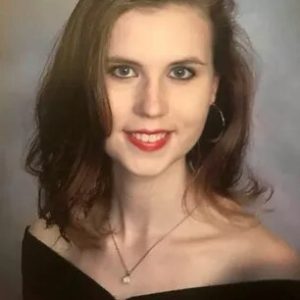
Room 122, Poster #16
Rutgers University- SEBS
Mentors:
Payton Harmon, Emily Hanselman
Paul A.S Breslin
The anti-inflammatory drug Ibuprofen inhibits sweet taste
Background: The non-steroidal anti-inflammatory drug (NSAID) Ibuprofen is a common over-the-counter medication. In vitro studies have shown that ibuprofen inhibits the human sweet taste receptor T1R2/T1R3. This receptor is expressed in the oral cavity, as well as other organs including the gastrointestinal tract, pancreas, liver, and brain, and is speculated to play a role in monitoring blood glucose. Preliminary data suggest high concentrations of orally-rinsed ibuprofen inhibit sweet taste in humans. Hypothesis: Oral glucose detection will be impaired by low concentrations of oral ibuprofen rinses, comparable to the levels seen in blood after taking 2 or 3 tablets of ibuprofen (400 or 600 mg respectively). Methods: Oral glucose detection thresholds in 16 human subjects were measured with two-alternative forced-choice (2AFC) testing under conditions of deionized (DI) water rinse, 0.12 mM oral Ibuprofen rinse, or 0.24 mM oral Ibuprofen rinse. Ibuprofen rinse concentrations were based on published peak plasma concentrations after taking a standard dose of either 400 or 600 mg respectively. Results: The 0.24 mM oral ibuprofen rinse significantly increased oral glucose detection thresholds (impaired detection) compared to the DI water rinse (p<0.01). The 0.12 mM oral ibuprofen rinse showed a similar trend of increasing detection thresholds compared to water, but it was not significant at p=0.15. Conclusions: These data suggest that low physiological levels of ibuprofen impair glucose detection. Given that sweet taste receptors are expressed throughout the body in most major metabolic tissues, this has systemic implications for metabolism and glucose regulation. This in turn supports the observations that ibuprofen can help control several metabolic diseases including Alzheimer’s and cancer. Acknowledgments: We thank the Amman Armen Ahmed family for their support of the RISE program. We thank the Busch Biomedical Fund for support of this research.
Biography: Sarah Sywanycz is a rising senior at Rutgers University-NB within the School of Environmental and Biological Sciences (SEBS). She is pursuing a double major in Biochemistry and Nutritional sciences with aspirations of becoming a physician scientist (MD/PhD). Sarah is particularly interested in investigating the roles of nutrition and metabolism on pathophysiology. Outside of academics Sarah volunteers at a Hospice organization to accompany those who need it the most. This summer, Sarah worked in the Nutritional Sciences Department under PI Paul Breslin and near-peer mentor Emily Hanselman where she gained tremendous insight regarding the science of chemoreception. She hopes to continue conducting research throughout her undergraduate career through the G.H Cook Scholars Honors thesis program and post-graduation.
-
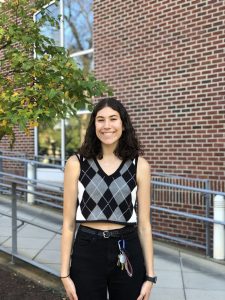
Room 122, Poster #17
Lafayette College
Mentors:
Geraldine L. Cochran
Department of Physics & Astronomy, Office of STEM Education
Rutgers, The State University of New JerseyUsing Community Cultural Wealth to understand experiences in physics bridge programs
Many conceptual and theoretical frameworks in education research tend to value social capital and cultural capital from the most privileged groups and focus on what underrepresented groups are “lacking.” This research often employs a deficit model of understanding the experiences of people marginalized in education. To fully understand the academic experiences of students from minoritized groups it is important to instead focus on what skills these groups use to overcome challenges. Community Cultural Wealth (CCW) is a framework created by Tara J. Yosso that is used to highlight the valuable resources Communities of Color have to help them through certain systems such as education. The goal of this portion of the project is to understand which forms of Community Cultural Wealth influence the experiences of students in physics bridge programs affiliated with the American Physical Society’s Bridge Program. Specifically, we want to understand which forms of CCW are most influential in a student’s decision to apply to graduate school, and support students in overcoming challenges that arise in their experiences as graduate students. To do so, we conducted 1 hour, semi-structured interviews with various Bridge Program participants and used qualitative coding to code for examples of each of the 6 types of CCW.
Biography: Jenna Tempkin (she/her) is from Springfield, New Jersey and is a rising junior physics major at Lafayette College in Easton, Pennsylvania. She is an American Physical Society student ambassador, a board member of Lafayette’s Physics Club and a board member of Lafayette’s Women+ In Physics Club. She is also a supplemental instructor for Lafayette’s introductory physics course sequence. Outside of physics, Jenna is Co-Captain of the Lafayette College Dance Team, plays flute in the Lafayette College Concert Band, and is an active member of Lafayette’s Hillel Society. This summer, she participated in the Rutgers Physics & Astronomy REU program doing physics education research under the guidance of Dr. Geraldine L. Cochran.
-

Room 122, Poster #18
Rutgers University – Newark
Mentors:
Christine Zardecki, Brian Hudson, Ph.D., Stephen Burley, Ph.D.
RCSB Protein Data Bank
Institute for Quantitative Biomedicine, Rutgers UniversityZhoufan Shen, Ph.D., Joseph H. Lubin, PhD., Sagar D. Khare, Ph.D.
Institute for Quantitative Biomedicine, Rutgers University
Department of Chemistry and Chemical Biology, Rutgers UniversityComputational modeling of potential drug-resistance mutations in the
SARS CoV-2 main proteaseIn 2019 a novel coronavirus disease emerged in Wuhan, China. It was identified as SARS Cov-2, a virus that crosses species barriers. The SARS CoV-2 spread worldwide, resulting in a pandemic with millions of afflicted people and deaths. Today a greater understanding of the sequencing, structure, and function of coronavirus is crucial in order to identify potential treatments to prevent near-term and future pandemics. The main protease, MPro, plays a critical role in the life cycle of the virus by cleaving two polyproteins, pp1 and pp1ab, at specific sites. Based on a number of structures of SARS coronavirus publicly available in the Protein Data Bank (PDB; rcsb.org), previous research revealed that SARS CoV-1 is closely genetically related to SARS CoV-2. Indeed they share 96% identity between their main protease sequences and 100% identity in the active site (Zhang et al. 2020). Genome analysis of coronavirus revealed that the main protease is highly conserved and resistant to mutations in the active site, making it a suitable drug target (Lubin et al. 2022). As the virus evolves, new mutations may cause structural changes that would be resistant to current pharmaceuticals. In this study, we are identifying escape mutations by analyzing experimental data from the PDB and using computational modeling. We are predicting structural mutations to identify which ones the main protease might tolerate. Then using experimental models, we screen the effects of tolerable mutations on inhibitors to identify potential escape mutations. Our study will help identify potential escape mutations along with suggestions for new drug discoveries.
Biography:
Jordania Urquizo is a rising junior pursuing a double major in Biology and Chemistry at Rutgers University, Newark. Her interest in research led her to the RISE program and RCSB Protein Data Bank. Jordania is interested in bringing her academic strengths to a lab working towards helping society. Her scientific interest is the study of sequence, structure and function of protein targets responsible for human disease by using computational chemistry. Last summer, Jordania participated in the NSF Research Experience for Undergraduates at Temple Materials Institute in Philadelphia. In 2021, she received her Associate’s Degree in Biology with highest honors from Passaic County Community College. Jordania plans to pursue a Ph.D. in computational chemistry upon graduation from Rutgers.
-

Room 122, Poster #19
San Diego State University
Mentors:
Edward Chuang and Monica Driscoll, Ph.D.
Department of molecular biology and biochemistry
Rutgers, The State University of New JerseyExopher production in C. elegans expressing ALS protein disease
Caenorhabditis elegans (C. elegans) may extrude exophers, which are large vesicles (~4 µM) containing deleterious cell contents that can include specifically aggregated proteins. Because the vast majority of exopher research has been conducted on its cellular structures, the relationship between exophers and neurodegenerative diseases remains unclear. Amyotrophic Lateral Sclerosis (ALS) is a fatal neurodegenerative disease in which neurodegeneration is caused by a loss of motor neurons. In the present study, we induced stress in C. elegans by fasting or feeding a total of six different strains (AG2, SOD-1, SOD-5, SOD-1,5, TDP-43, and FUS) for six hours along with six different drugs (metformin, rapamycin, MG-132, 115-7C, MKT-077, spautin-1) plated with the worms. Observed underneath a fluorescent microscope, we recorded the differences in exopher production in all six strains. Our data collected so far suggests that when C. elegansare fed and contain the aggregated proteins AG2 and TDP-43, they significantly produce more exophers than when they are fed and contain the protein AG2 (overexpression of mCherry in touch neurons). However, in the fed condition, worms with the proteins AG2 and TDP-43 did not significantly produce more exophers than those with AG2 and FUS. This further suggests that FUS does not have the same effect as TDP-43. Lastly, our data revealed that there was no significant difference in exopher production in the fasted condition. This study will allow us to examine and understand which pathway may underlie the pathology of the cell. This document aims to be an insightful resource for those seeking to obtain therapeutic strategies for individuals with ALS.
Biography: Daphne Vega is a rising junior majoring in psychology and minoring in interdisciplinary studies at San Diego State University (SDSU). At SDSU, she is part of the National Institute of Aging-funded Advancing Diversity in Aging Research (ADAR) program. She conducts mentored research with Dr. Amy Jak from the University of California, San Diego, and her project is focused on sex and age-related differences in post-concussive symptoms and whether they vary as a function of age. She recently presented a poster on this topic at the 2022 Western Psychological Association (WPA). This summer of 2022, Daphne was chosen to participate in RISE under Dr. Monica Driscoll. Their project is focused on exopher production in C. elegans expressing ALS disease proteins in which the team targets specific neuronal pathways to see if any underlie the pathology of the cell and potentially obtain therapeutic strategies for ALS patients. Daphne intends on earning a Ph.D. in clinical psychology with a specialization in neuropsychology, conducting her own research, and teaching in a university setting. Daphne would like to thank RISE and the mentorship of Dr. Jak, Dr. Driscoll, and Dr. Chuang for the opportunity to pursue further research.
-

Room 122, Poster #20
Rutgers University-New Brunswick
Mentors:
Rachel M. Vladimirsky, Michael J. Grzenda, Kelly M. Hughes, Dr. Jonathan P. Singer, Rutgers University-New Brunswick
Dr. Christopher Shuck, Drexel University
Self-limiting electrospray deposition (SLED) is the method of applying strong electric fields to produce charged droplets that form a thickness-limited coating by spraying insulating materials onto conductive surfaces. The study of nanowire formation from methylcellulose (MC) during electrospray has enabled researchers to gain a fundamental understanding of how they are formed and their self-limiting properties, and we can now explore opportunities to use these as a tool to add functionality to surfaces. With the addition of particles, these ideally self-limiting sprays will produce useful three-dimensional and targeted coatings that will have the ability to functionalize and upgrade surfaces. In this study, we tested different concentrations of MXene (Ti₃C₂) to produce the most optimal self-limiting spray on micro pattern chips and laser induced graphene (LIG), which can later be utilized in the creation of flexible sensors and devices, as well as very small sensors using nanoparticles. With a pure MC spray as a baseline, we analyzed the microchip features using microscope images and conducted multiple width comparisons to establish which concentrations produce the least blended features and the most self-limiting results. Furthermore, we were able to upgrade the conductivity of surfaces post-spray using MXene after removing the MC from the substrate, which can aid in the production of printed electronics. Thus far, we’ve concluded that microchip features sprayed with MXene particles were wider than those of a chip sprayed with solely MC (no particles), but still much more controlled than pure MXene sprays. We believe that this is due to MXene’s conductivity and its effect on the self-limitation, but we cannot yet rule out the effects of the particle size and shape adding volume to the formed structures. Still, we have demonstrated that MXene:MC composites can be both sufficiently self-limiting while simultaneously surface functional.
Biography: Rachel Vladimirsky is a RISE Associate and an NSF REU fellow this summer of 2022, along with being a Rutgers student at the New Brunswick campus. She was born in Ridgewood, New Jersey and was raised in Fair Lawn, New Jersey for most of her life. Rachel is a rising sophomore who is planning to major in Biomedical Engineering with a focus on rehabilitation in the Biomechanics and Rehabilitation Engineering track. This is her first intensive experience in research for she has just begun her college career. However, Rachel was a part of the National Science Honor Society throughout her high school career, and earned third place in a countywide Biology League competition. She also dedicated many hours volunteering for Valley Hospital, where she worked in a medical and scientific environment assisting in the pharmacy and orthopedic departments, while strengthening her leadership skills working among other junior volunteers. Rachel is considering pursuing graduate study in Biomedical Engineering, and plans to work on developing medical devices or prosthetics. She looks forward to continuing her education and furthering her experience in this field, and is excited to dive deeper into the BME world.
-

Room 122, Poster #21
University of Wisconsin-Madison
Mentors:
Dr. Daniel Giménez, Dr. Ewan Oleghe
Department of Environmental Sciences
Rutgers, The State University of New JerseyAggregation and carbon storage in forested and grazed pasture soils from New Jersey
Plants remove atmospheric carbon through photosynthesis and return part of it during the process of respiration. A portion of the carbon stored in the biomass is continuously transferred to the soil via surface litter and root deposition. Through these mechanisms, soils have the potential to remove up to 30 percent of anthropogenic carbon emissions each year. Thus, soil is a significant terrestrial reservoir for carbon, capable of minimizing the destructive effects of climate change. A fraction of soil carbon is very stable with long residence times (i.e., more than 1,000 years). The objective of this study was to determine the effects of land use and duration of land use on stable carbon fraction stored in forest and grazed pasture soils. Utilizing wet sieving and chemical dispersion, aggregates were separated into five fractions, and carbon content was determined in each fraction using an elemental analyzer. Results from the study revealed that among the different forest systems compared, the amount of aggregates of ≥ 2mm size were greater in the young forest and the least in the old forest. Amongst the grazed pasture, the distribution of ≥ 2mm aggregates followed the order: intermediate > young > old. The mineral-associated carbon under grazed pasture was significantly different for the young grazed field with mean concentrations of 1.53 g C kg-1.
Biography: Tien Vo is a rising senior at the University of Wisconsin-Madison (UW-Madison), studying physical geography and environmental studies. At UW-Madison, Tien works with Dr. Joseph Mason from the Department of Geography on soil and landscape geomorphology research. She is also heavily involved with the Community Environmental Scholars Program (CESP) and McNair Scholars Program on campus. Tien is interested in soil and environmental conservation, restoration, and health and hopes to pursue a graduate degree in those areas after graduation. Outside of academia, she enjoys watching sports, keeping up with current events, and learning about other cultures.
-

Room 122, Poster #22
Rhodes College
Mentors:
Dr. Roger Cohen and Dr. Kristen McQuinn, Rutgers University, Department of Physics and Astronomy
Star formation histories across the Small Magellanic Cloud from Hubble Space Telescope imaging
The Magellanic Clouds are a pair of irregular dwarf galaxies in the Local Group. Due to their close proximity, we can image faint stars in a galaxy that formed at early epochs of cosmic time. Because of this, we can characterize star formation at early times. While photometry has been done before in the Magellanic Clouds, this is the first time that deep images have been taken with the same observing setup across multiple fields in both clouds. Throughout this project, I used data from a parallel program on the Hubble Space Telescope called Scylla and assumed three isochrone libraries to compare differences in star formation histories across the Small Magellanic Cloud (SMC).
Biography: Lillian (Lily) Whitesell is from West Point, Alabama, and is currently studying physics and mathematics at Rhodes College. She is a member of the Society of Physics Students, American Physical Society, Rhodes Women in STEM, AfterMath Club, and Rhodes Radio. She also is a physics tutor and works in her school’s observatory as a Rhodes Student Associate. In her leisure time, she likes to journal, read, and make art. This summer, Lily joined Dr. McQuinn’s lab to research star formation histories across the Small Magellanic Cloud. Following participation in the Rutgers Physics and Astronomy REU, she is continuing her pure mathematics research in geometric analysis and her physics research on quasars using the James Webb Space Telescope.